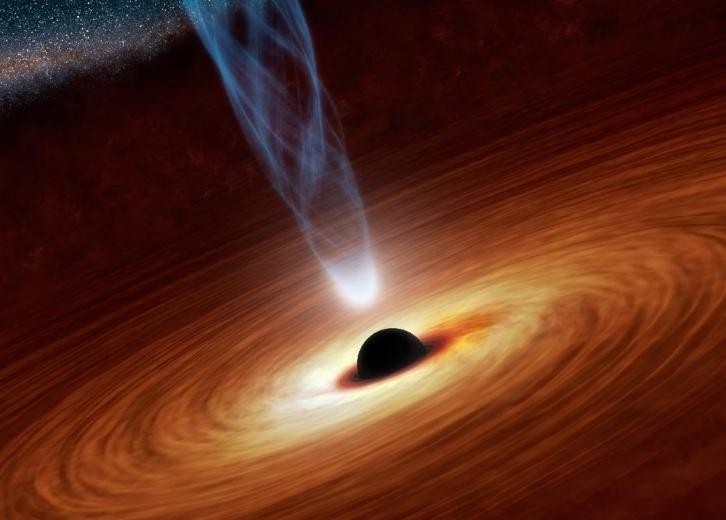

50 space terms for understanding the universe
The National Aeronautics and Space Agency, or NASA, was founded on July 29, 1958, when President Dwight D. Eisenhower signed the National Aeronautics and Space Act, one year after the Soviets launched Sputnik 1, the world's first artificial satellite. NASA was designed from the start to push the bounds of space exploration with research into aerospace and aeronautics as well as with a civilian space program.
In honor of World Space Week , which takes place Oct. 4-10, Stacker compiled a list of key astronomy and astrophysics terms from a variety of authoritative science communication sources, including Crash Course: Astronomy , How Stuff Works , and International Comet Quarterly.
As the agency unrelentingly forged a path toward astronomical discovery, NASA also invented a number of technologies that we use in our everyday lives. These include artificial limbs, LASIK surgery, improved water filtration, camera phones, freeze-dried foods, memory foam, LED lights, and even the Dust Buster. In fact, it was a NASA scientist who invented the Super Soaker squirt gun .
Keep reading to learn the terms that are commonly used in this fascinating field.
You may also like: Can you answer these real 'Jeopardy!' questions about space?
#1. Aberration of light
Similar to how raindrops hit a moving car window as if from an angle, an aberration of light is the phenomenon where stars or other celestial bodies appear from Earth to be slightly off from their true position. This happens because of motion—specifically, the interaction of the Earth's movement with the speed of light causes this confusing phenomenon.
#2. Alpha Centauri
Alpha Centauri is the name of the closest star system to earth. It comprises two main stars, Alpha Centauri A and Alpha Centauri B, as well as the closest of the three stars, Proxima Centauri. In 2016, astronomers found an Earth-sized planet orbiting Proxima Centauri, later named Proxima b. While this planet shows signs that life could exist, astronomers are still unsure how habitable it is.
#3. Andromeda Galaxy
Also known as M31, this galaxy is the closest to the Milky Way, where the Earth exists. Andromeda Galaxy has a similar structure to the Milky Way; it is spiral in shape and has a large density of stars, dust, and gas. Because of its proximity, it is the only galaxy that can be seen from Earth with the unaided eye, particularly on fall and winter nights.
#4. Asteroid
Asteroids are chunks of rock or metal that used to be parts of other small planets that have broken off due to a collision in space and now orbit the sun. The word asteroid means "star-like," referring to their emission of light. Asteroids can be lumped into orbital groupings called families and form into an asteroid belt.
#5. Barycenter
A barycenter is the common center mass around which a solar system orbits. While it has become common knowledge that planets orbit stars, it is, in fact, the barycenter that both stars and planets orbit around. Our solar system's barycenter is constantly changing position based on where each of the planets is in its orbit, ranging from being near the center of the sun to being just outside its surface.
#6. Big Bang
The Big Bang Theory is a model describing the origin of the universe. It explains how the universe expanded from a high-density, high-temperature state into the cosmos we see today. Although there are alternative theories, this is the most widely recognized theory of how the universe began.
#7. Binary star
Binary stars are systems that only contain two stars that orbit together. Together, they orbit a common center of mass. There are two types of binary stars: wide binaries and close binaries. Wide binaries orbit with a significant distance apart from each other, causing them to have little effect on each other. Close binaries orbit closely and actually can acquire material from one another.
#8. Black hole
Made famous by Einstein's theory of general relativity, a black hole is the small dense core remnant of a dead star. Since the density of this core is more than about three times more than the density of the sun, the strong force of gravity produces a black hole.
#9. Brown dwarf
A brown dwarf is born from a collapse of gas and dust, similar to stars. This collapse creates a large amount of energy that gets trapped in a ball of material. The energy emits light from within for tens of millions of years, becoming dimmer as time passes.
#10. Celestial sphere
A celestial sphere is a tool used in spherical astronomy. It is a sphere with a large radius that is concentric with Earth. The sky surrounding the Earth is projected on the sphere, which is helpful for astronomers when they are attempting to plot positions in situations where distances aren't important.
Besides being a beautiful phenomenon rarely visible from Earth, comets are icy, frozen balls of gas, rock, and dust. Comets gain their trademark bright glow by emitting gas as their orbit passes close to the sun, sometimes even resulting in a glowing tail.
#12. Constellation
One of the first things we learn about space is its many constellations. From Orion and his belt to the mythical Seven Sisters and the Big and Little Dipper, constellations map out a group of stars that form shapes in the sky. Explorers first used constellations to map directions as well as a tool for storytelling.
#13. Dark energy
Like the cosmic mystery its name evokes, dark energy is hard to define. The easiest way to think of it is a property of space that accounts for an expanding universe. The universe's "empty space" may still have its own, dark energy. However, scientists are still trying to pin down the properties of this dark energy that makes up most of the universe.
#14. Dark matter
Somewhat similar to dark energy, dark matter also covers a large chunk of the universe and remains quite mysterious to scientists. The main difference is that dark matter explains more about how groups of objects in the universe function together. Though scientists have a greater understanding of what dark matter isn't than what it is, a leading theory posits dark matter is made from exotic particles like axions or Weakly Interacting Massive Particles (WIMPS).
#15. Doppler shift
Also known to most as the Doppler effect, the Doppler shift explains the phenomenon of the change in frequency of a wave in relation to an observer. This can be observed when an ambulance drives past you and the volume of the siren doesn't quite match with the proximity of the ambulance to you.
#16. Eclipse
An eclipse refers to one body in space moving into the shadow of another body. Eclipses can exist in two forms—solar and lunar—depending on the orbit of the Earth and moon. With a lunar eclipse, the moon moves behind the Earth. During a solar eclipse, the moon orbits between the Earth and the sun.
#17. Equinox
During an equinox, Earth experiences an even 12 hours of daytime and 12 hours of nighttime. This occurs twice a year: The March equinox marks spring's arrival in the Northern Hemisphere and Fall in the Southern Hemisphere. The September equinox ushers in the fall's arrival in the north and spring in the south.
#18. Escape velocity
Escape velocity is the speed that an object needs in order to escape a planet or moon's gravitational pull. For example, the escape velocity for a spaceship to leave the surface of Earth is about 25,000 miles per hour.
#19. Exoplanet
When planets exist beyond our solar system and orbit a star other than the sun, they are called an exoplanet. Exoplanets are extremely hard to see, as they are often hidden by the glare of the star they orbit. Because of that, the first exoplanet was not recognized until 1992.
#20. Fermi paradox
Named after Italian-American physicist Enrico Fermi, the Fermi paradox is a theory using statistical analysis to postulate why we have yet to see signs of life on other planets within our galaxy. The paradox assesses the likeliness that there are similar planets to Earth within the Milky Way, and likely have the ability to support life, yet no signs of life have been found which means it's a paradox.
#21. Galaxy
We all know that we live in the Milky Way galaxy, but what exactly is a galaxy ? A galaxy is a wide-ranging mix of dust, gas, stars, and various solar systems brought together by a singular gravitational pull.
#22. Gamma-ray burst
A gamma-ray burst is the most violent type of explosion in the universe. The explosion itself emits more energy in 10 seconds than the sun will emit in its lifetime. When it happens, it's the brightest source of light in the observable universe. Satellite evidence suggests gamma-ray bursts are the result of matter collapsing into black holes.
#23. Gravity
Based on the Latin word for "weight," gravity is a natural phenomenon where things with mass or energy are drawn toward its center. The force of gravity is what keeps us planted on Earth's surface and also keeps the Earth orbiting the sun.
#24. Hypergalaxy
A hypergalaxy consists of one large dominant galaxy surrounded by various smaller tertiary galaxies. The Milky Way and our neighboring Andromeda galaxies are both hypergalaxies.
#25. Light-year
A light-year is as simple a concept as its name suggests. It is an astronomical distance that measures the distance that light travels in a year. One light-year roughly equates to 6 trillion miles.
#26. Magellanic clouds
Understanding Magellanic clouds has become a propelling source of understanding distant galaxies. They consist of two irregular galaxies that orbit the Milky Way. Orbiting about 200,000 light-years away, the Magellanic clouds are formed by the Large Magellanic Cloud and the Small Magellanic Cloud.
#27. Magnitude
Magnitude refers to a mathematical measurement for something's size or extent in comparison to other similar objects. In astronomy, magnitude is a unitless system used to measure the varying degrees of brightness of objects in the sky. Greek astronomer Hipparchus introduced the concept of magnitude for classifying stars in 129 B.C., referring to the brightest stars in the sky as "first magnitude."
#28. Meteor
A meteor is a rocky object or asteroid that vaporizes when entering the Earth's atmosphere. They're often called "shooting stars" and provide a beautiful glowing tail as they enter the atmosphere. Next time you see one, be sure to make a wish upon a meteor!
#29. Milky Way
The Earth's galactic home, the Milky Way is a spiral galaxy that is constantly rotating. The Milky Way contains a high amount of dust and gas wrapped around the central galactic bulge. The galactic bulge contains a dense amount of dust, gas and stars. And within that bulge, exists a large black hole (see slide #8). Our solar system lies about 30,000 light-years from the galaxy's center.
The moon is a heavenly body that orbits the Earth and happens to be the easiest object to spot in the night sky. As the moon orbits our planet, we see it go through "phases," where at different times different proportions of the moon's surface are visible. These phases have guided time since the beginning of humanity. The calendar month roughly replicates the moon's orbit of the Earth.
#31. Nebula
A nebula is a large cloud of dust and gas in space that is produced when a star dies. The gas and dust eventually clump together into a mass large enough to form its own gravity. Nebulae can also be places for new stars to form and are sometimes referred to as "star nurseries."
#32. Nebular hypothesis
The Nebular hypothesis is the most widely accepted theory of how our solar system was born. The theory itself was born during the Scientific Revolution from the 16th to 18th centuries. The theory's essence states that our solar system was birthed from a nebula billions of years ago. The theory has also been applied to how all stars came to be.
#33. Neutron star
Neutron stars are small, but very dense objects that are birthed by the explosive death of a giant star. Neutron stars can exist in two states. The first is a pulsar, which emits a narrow radiation beam. The second is a magnetar, which has a powerful magnetic field that has the force to distort atoms.
#34. Oort Cloud
Named after astronomer Jan Oort whose theory about a cloud comprising a shell of icy objects existing beyond the Kuiper Belt, or the region that exists in our solar system beyond Neptune, could be responsible for the long-term comets visible from Earth (like Halley's). The cloud is theorized to comprise the remains of disc materials of planets and the sun.
In short, an orbit is the gravitationally curved trajectory of an object in space. In other words, an orbit is the circular motion in which objects in space travel due to gravity's pull. For example, the moon orbits around the Earth and the Earth orbits around the sun in a circular motion. An object that orbits another is called its satellite.
#36. Parallax
Measuring using parallax involves estimating the distance of nearby celestial objects by measuring movement against more distant celestial objects. This method is often used when measuring distances of neighboring stars, called stellar parallax.
#37. Quasar
Quasars are large distant objects in space that are powered by large, powerful black holes. They tend to shine so brightly that their light eclipses the old galaxies that they exist within. They are capable of emitting thousands of times more energy than the Milky Way emits.
#38. Red giant
A red giant is a star that is reaching its final days and approaching death. If a star has turned into a red giant, the star is in the last states of its stellar evolution and expands. Our own sun will eventually expand and turn into a red giant—but not for a few billion years.
#39. Red shift
Red shift and blue shift explain how light changes wavelength as objects in space move closer or farther from each other. As an object moves away from us, the light is shifted towards the red end of the color spectrum. In turn, as it moves closer, the light shifts towards the blue end of the spectrum. Along with blue shift, red shift is hugely valuable in understanding the universe's expansion.
#40. Solar system
A solar system is a gravitationally bound system of a sun and the objects that orbit it. That includes the bodies that orbit the objects orbiting the sun. For example, our solar system contains the sun, the planets that orbit it, as well as moons and other objects that orbit them.
#41. Solar wind
Solar wind is a wind streaming solar particles and plasma from the sun. As a solar wind carries charged particles from the sun towards the Earth could have catastrophic effects for Earth's habitants. But don't worry, Earth's magnetic field provides a pretty sturdy shield against any of these negative effects.
#42. Spaghettification
Sometimes referred to as the "noodle effect," spaghettification is when the extreme tidal forces stretch out objects to be long and thin like a noodle. This effect can also be caused by the immense gravitational pull of a black hole.
Other than serving as beautiful guiding lights in our sky, stars are astronomical objects that are composed of gas that pulls itself together with its own gravitational pull. Nuclear fusion at the star's core creates the light that stars emit.
#44. Star cluster
In the same way that planets can be gravitationally bound to the sun, causing them to orbit it, stars can also cluster together due to gravity. Two types of star clusters can be determined: globular clusters and open clusters. Globular clusters are tight clusters of thousands of older stars, whereas open clusters are made up of a few hundred very young stars.
#45. Supernova
A supernova is the largest explosion that can be seen with the human eye. A supernova occurs as the last step of a dying massive star that emits an extremely bright light. This occurs in the death of a star at least five times the mass of our solar system's sun.
#46. Telescope
A telescope is the signature tool of astronomers to see far objects out in space in further detail. Today, telescopes are designed with curved mirrors that gather light from the sky and concentrate it so that far away objects are visible.
#47. Theory of relativity
The theory of relativity was developed by Albert Einstein in 1905 and includes both theories of special relativity and general relativity. The theory determines that the laws of physics are the same for all non-accelerating observers and was monumental in introducing a framework for space and time.
Tides are the rise and fall of sea level that is caused by the gravitational pull of the moon and the sun. They are one of the most reliable phenomena in the world. The difference between high and low tide is called the tidal range.
#49. White dwarf
A white dwarf is a relatively small star that is about the size of a planet that is very dense. It is essentially a star that has exhausted all of its nuclear fuel from within. It expels most of its outer material, leaving a white-hot core that cools over the next billion years.
#50. Universe
And lastly, we have landed at the universe. A loaded definition that has flummoxed scientists for generations, a universe contains billions of galaxies and even more stars along with their planets, moons, asteroids, comets, dust, and gas, all of which exists swirling around in the massive thing we call space.
You may also like: Can you answer these real 'Jeopardy!' questions about space?
Trending Now
Top 100 country songs of all time.

50 best colleges on the East Coast

100 best 'SNL' episodes

50 most meaningful jobs in America

bottom_desktop desktop:[300x250]
- Cambridge Dictionary +Plus
Synonyms and antonyms of space travel in English
Space travel.

Word of the Day
Your browser doesn't support HTML5 audio
a group of four people who play musical instruments or sing as a group

Shoots, blooms and blossom: talking about plants
Learn more with +Plus
- Recent and Recommended {{#preferredDictionaries}} {{name}} {{/preferredDictionaries}}
- Definitions Clear explanations of natural written and spoken English English Learner’s Dictionary Essential British English Essential American English
- Grammar and thesaurus Usage explanations of natural written and spoken English Grammar Thesaurus
- Pronunciation British and American pronunciations with audio English Pronunciation
- English–Chinese (Simplified) Chinese (Simplified)–English
- English–Chinese (Traditional) Chinese (Traditional)–English
- English–Dutch Dutch–English
- English–French French–English
- English–German German–English
- English–Indonesian Indonesian–English
- English–Italian Italian–English
- English–Japanese Japanese–English
- English–Norwegian Norwegian–English
- English–Polish Polish–English
- English–Portuguese Portuguese–English
- English–Spanish Spanish–English
- English–Swedish Swedish–English
- Dictionary +Plus Word Lists
Add ${headword} to one of your lists below, or create a new one.
{{message}}
Something went wrong.
There was a problem sending your report.

A-F G-M N-R S-Z
Asteroid: Rocks floating around in space. Some are the size of a pick-up truck. Others are hundreds of miles across.
Atmosphere: The gases held by gravity around Earth and around other planets. "Atmosphere" can also be used to talk about gases around stars.

Atom: The basic building block of matter. It is made of protons, neutrons, and electrons. There are many different kinds of atoms. For example, the simplest atom with one proton and one electron is a hydrogen atom. An atom with six protons, six neutrons, and six electrons is a carbon atom.
Aurora australis: Bright glows and bands of light that appear in the skies at night near the South Pole. They are also called the southern lights.
Aurora borealis: Bright glows and bands of light that appear in the skies at night near the North Pole. They are also called the northern lights.
Black hole: A place in space where matter and light cannot escape if they fall in.
Comet: An icy rock that lets off gas and dust, which may form tails when it is flying close to a sun.

Constellation: A group of stars in the sky. They're often named after an animal, object, or person. The stars form certain patterns based on where you are. We have one view of stars here on Earth, but from another solar system or galaxy, the constellations would look different.
Corona: The outer atmosphere of a star.
Cosmos: The universe seen as an orderly, harmonious whole.

Crater: A large, bowl-shaped dent in the ground. They can be caused by an explosion or the impact of a meteorite.
Dwarf planet: Objects that are round and orbit the sun, just like planets do. But unlike planets, dwarf planets are not able to clear their path around the sun. That means there are other objects orbiting at roughly the same distance from the sun. A dwarf planet is much smaller than a planet (smaller even than Earth's moon), but it is not a moon. Pluto is the best known of the dwarf planets.
El Niño: A weather condition that sometimes occurs in the Pacific Ocean. It is so big that it affects weather all over the world. It starts with unusually warm water in the Pacific Ocean near the equator.
Electromagnetic Spectrum: The name for all the different kinds of light and energy in the universe. This includes radio waves , microwaves , infrared radiation , visible light , ultraviolet light , X-rays , and gamma rays .
Equator: The circle around a planet or moon that is the same distance from its north pole and its south pole.
Exoplanet: A planet that freely floats between stars or one that orbits a star outside our solar system.

Galaxy: A collection of thousands to billions of stars held together by gravity. The galaxy we live in is called the Milky Way.
Gamma rays: Part of the electromagnetic spectrum , also called gamma radiation. These waves have lots of energy. They come from big events like solar flares and exploding stars.
Gas: A loose collection of atoms moving around each other.

GPS: This stands for Global Positioning System. It’s a system that uses satellites, ground stations, and receivers to tell you exactly where you are on Earth.
Gravity: A force that pulls matter together.
Greenhouse gas: Gases in the atmosphere that trap heat from the sun. Some greenhouse gases are carbon dioxide, methane, water vapor, and nitrous oxide.
Infrared: Part of the electromagnetic spectrum that we cannot see with our eyes but can feel as heat. It is made of waves released by hot objects, such as stars. We call it infrared because these waves are just a little longer than the wavelengths of red light we can see.
Kuiper Belt: A donut-shaped ring of icy objects beyond the orbit of Neptune. Pluto is the best known of these icy worlds.
La Niña: The opposite of El Niño . La Niña happens because of unusually cold sea surface temperatures across the east-central Equatorial Pacific. During a La Niña year, winter temperatures are warmer than normal in the Southeast and cooler than normal in the Northwest United States.
Light year: It’s not a year, or an amount of time at all. It’s the distance light travels in one year. It’s the same as 5,878,499,810,000 miles (or 9,460,538,400,000,000 meters). When things are very far away, it’s easier to talk about their distance in light years than millions or billions or trillions of miles.
Magnetic field: The space around a magnet where the magnetic force is active. Earth has a magnetic field and its extension into space helps protect us from space weather .
Mass: The amount of matter something is made of.
Matter: The stuff that everything is made of. Atoms are a tiny bit of matter. Big planets have lots of matter. Even you are made of matter!
Meteor: The streak of light caused when a meteoroid enters a planet’s atmosphere and starts to burn from the heat of friction.
Meteorite: A meteoroid that lands on the surface of a planet.

Meteoroid: A little chunk of rock in space smaller than a pick up truck. If it were bigger, it would be an asteroid .
Microwaves: Part of the electromagnetic spectrum . These waves of energy are made by stars, the clouds of gas between stars, and supernovae. There is also something called “cosmic microwave background radiation.” It’s all over the universe, and scientists study it to learn how the universe began.

Molecule: The smallest unit of a substance that still acts like the main substance. A molecule can be a single atom or a group of atoms. Water is a substance, and one molecule of water is made of two hydrogen atoms and one oxygen atom, which we write as H2O. That molecule of water still has the same properties as a glass of water. But if you split it into hydrogen and oxygen, it’s not water any more.
Moon: A natural object that travels around a bigger natural object. Planets can have moons. Dwarf planets can have moons. Even some asteroids have moons! Astronomers usually call them satellites or natural satellites.
Nebula: A cloud of dust or gas found between stars.
Neutron star: A very dense star made mostly of neutrons. It has very powerful gravitational force nearby because the whole mass of a star is pulled into one object just a few miles across.
Oort Cloud: A spherical shell around our solar system. It may contain more than a trillion icy bodies. Long-period comets (which take more than 200 years to orbit the sun) come from the Oort Cloud.

Orbit: The curved path that a planet, satellite, or spacecraft moves as it circles around another object.
Ozone layer: A part of Earth’s atmosphere that absorbs lots of the sun’s ultraviolet radiation. It is made of a gas called ozone, which is a molecule of three oxygen atoms.
Particle: A tiny amount or small piece of something.
Planet: A large body in outer space that circles around the sun or another star.
Pulsar: An object, thought to be a rapidly rotating neutron star. It releases short pulses of radio waves and other electromagnetic radiation.
Quasar: Compact area in the center of a massive galaxy that is around a supermassive black hole. They are some of the brightest objects in the universe and can be observed across the entire electromagnetic spectrum .

Radiation: The energy or particles released from sources like radioactive materials, explosions, and chemical reactions. This includes energy waves on the electromagnetic spectrum .
Radio waves: Part of the electromagnetic spectrum . Radio waves are around us here on Earth, and they’re out in space too. These waves are low energy. We use them every time we listen to the radio. They’re used to talk to satellites, too. They are also common in outer space, since they are sent out by forming stars, pulsars, supernovae, the sun, and even colliding galaxies.
Radioactive: How we describe some atoms that are unstable. They change into different kinds of atoms and release lots of energy.
Satellite: An object that orbits another object. A moon is actually a satellite. We also say satellite to refer to spacecraft people build that orbit Earth, other planets, moons, asteroids, or other objects out in space.
Solar flare: A burst of energy and particles from the sun. It releases gases, radiation waves, and magnetic storms.
Solar Panel: A piece of material that can capture sunlight and turn it into electricity.
Solar system: A set that includes a star and all of the matter that orbits it, including planets, moons, asteroids, comets, and other objects.
Solar wind: The constant stream of particles and energy emitted by the sun.
Space weather: The conditions in space that can affect Earth, satellites, and space travel. Space weather is mostly the result of solar wind and solar storms.
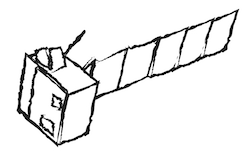
Spacecraft: A vehicle used for traveling in space.
Speed of Light: Light is the fastest thing in the universe. It travels 186,282 miles (299,792,458 meters) every second.
Star: A ball of shining gas, made mostly of hydrogen and helium, held together by its own gravity. Turning hydrogen into helium creates the energy that makes stars shine.

Sun: The star in the center of our solar system.
Supermassive: How we describe objects that have a million times (or more!) mass than our sun.
Supernova: The explosion of a star that makes it as bright as a whole galaxy.
Tectonics: Big movements of Earth’s crust. Tectonics creates mountain ranges, deep sea trenches, volcanoes, and earthquakes that can cause destructive tsunami waves that can cross oceans.
Ultraviolet: Part of the electromagnetic spectrum . It’s called ultraviolet because the waves are shorter than violet light. We can’t see ultraviolet light with our eyes, but some birds and insects can. Our sun emits ultraviolet radiation, and it can give you a sunburn if you’re outside without sunblock for too long.

Universe: All of space and time, and everything in it. It’s everything ever!
Vacuum: An empty space that doesn't have any matter .

Volcano: A mountain or hill that has an opening where lava, rock fragments, or gas erupt from deep inside a planet or moon.
Visible light: The part of the electromagnetic spectrum that we can see with our eyes. It’s all the colors of the rainbow.
Wave: A way energy moves from one place to another. Sometimes waves move materials the way water ripples in a pond move the water. Other times, waves don’t move anything around when they transfer energy. For example, X-rays and other waves on the electromagnetic spectrum don’t make any ripples when they move energy from place to place. We classify waves based on how long their wavelengths are. A wavelength is the distance from peak to peak (or valley to valley) of the wave.
X-Rays: Radiation with lots of energy made by very hot gases, stars, neutron stars, and gas around black holes. X-rays have so much energy they can pass though solid materials. They are part of the electromagnetic spectrum .
Explore Some Big Questions about Earth and Space!

What is the Big Bang?

Where does the sun get its energy?

What causes the seasons?

What is a planet?
If you liked this, you may like:
Which Language Do You Want to Learn?
- Inside Babbel
- Babbel Bytes
ARTICLES ABOUT
Jargon watch: astronauts and the language of space travel.

“5-4-3-2-1-0 booster ignition and liftoff!” You’ve probably heard the familiar sounds of a spaceship launch countdown at some point, but there are plenty of other space-related words and phrases that may be totally unintelligible to you. Astronaut lingo has been around as long as NASA itself. In fact, some of the earliest space slang was pretty hilarious, like referring to Cape Canaveral as “Malfunction Junction” or an astronaut’s adjustable seat as a “barber chair.”
Astronaut lingo has toned down quite a bit since the 1960s, and now it largely comprises jargon words and acronyms to describe technical aspects of spaceships and interstellar travel. While most of it’s only really useful if you plan to join NASA or visit the International Space Station , there are a few pieces of slang that have made it into our general lexicon. What may have started in outer space eventually became popular among civilians down on Earth.
This list, which is by no means comprehensive, will introduce you to some of the most common or interesting astronaut lingo. And if you can’t get enough of outer space linguistics, check out this explanation of where some common space exploration terms originated.
A Brief Guide To Astronaut Lingo
abort — to cut short or cancel a mission, first used in reference to space-flight in 1946
airlock — a room with two doors that allows astronauts to enter and exit a spacecraft without letting air out
command module — the compartment of a spacecraft that carries the crew, communications equipment and controls
downlink — radio signal sent to Earth from a spacecraft
glitch — a hitch, snag or malfunction; now used universally
keyhole — a part of the sky where an antenna cannot track a spacecraft due to technical limitations
liftoff — when a rocket leaves the launch pad and begins its flight into space
L minus (L-) — refers to the days, hours and minutes left until launch (L-0). T minus (T-) refers to the time remaining until launch on the official countdown clock. L- time and T- time are usually synced .
LOX — stands for liquid oxygen , which, when combined with fuel, creates a propellant that can be used to launch a rocket
nadir — the downward direction from a spacecraft to the center of a planet below (opposite the zenith )
puffy head bird legs — the feeling of a congested head and wobbly legs astronauts get upon the loss of gravity, which allows the fluid in their bodies to move around
screw the pooch — to make an embarrassing mistake (and yes, this phrase did originally come from NASA)
some words — instructions or advice given between astronauts and ground control, as in “We have some words for you about the signal light issue”
Spacecraft Event Time (SCET) — local time for events that happen aboard the spacecraft (the time on Earth minus the elapsed time between Earth and the spacecraft)
uplink — radio signal sent to a spacecraft from Earth
zenith — the point on a planet directly above the spacecraft (opposite the nadir )
zero gravity — the weightlessness astronauts experience in space due to an apparent absence of gravity (though gravity is still technically in effect)
Header Photo by The New York Public Library on Unsplash

If you ever wonder the meaning of an astronomical word, search no further and browse below to find the definition of the space term. The following are terms from A-Z related to space & astronomy:
Absolute magnitude – also known as absolute visual magnitude, relates to measuring a heavenly object’s brightness when viewed from 10 parsec or 32+ light years.
Absolute zero – The international community agreed to define absolute zero as equivalent to −273.15°C on the Celsius scale or−459.67°F on the Fahrenheit scale. It is the theoretical temperature entropy reaches its minimum value.
Absorption lines are a dark feature in the spectrum of a star formed by cooler gases in a star’s outer layer.
Accretion disks arise when material, usually gases, are transferred from one celestial object to another. There are two places astronomers find accretion disks, binary star systems and galactic nuclei.
Achromatic lens is a combination of lenses made of different glass. These bring two wavelengths into focus (normally red & blue) on the same plane. Achromatic lenses are used to take chromatic aberrations away from images.
Active galactic nuclei is a region in the center of a galaxy that has a higher than normal brightness. It is a class of galaxies that emit a large amount of energy from their center more than ordinary galaxies.
Active optics – Technology developed in the 80’s for reflecting telescopes. The construction enables telescopes to move 8 meter primary mirrors. As the name suggests, it works by “actively” adjusting the telescope mirrors.
Adaptive optics – technology used to improve performance of optical systems through the reduction of rapidly changing optical distortion. It is used to remove atmospheric distortion through the use of astronomical telescopes and laser communication.
Airy disk – Named after George Airy, it is the central spot in a diffraction pattern of a stars image in focus in a telescope.
Albedo is the ratio that light is reflected by a planet or satellite to that received by it. It is the ratio of total-reflected light.
Altazimuth mount is a two-axis mount used to support and rotate an instrument in two common perpendicular axes, vertical (altitude) and horizontal (azimuth).
Altitude is the height of anything above given a planetary reference plane. In astronomy the angular distance of a heavenly body above the horizon.
Anaglyph is a composite picture printed in two colors to produce a 3D image viewed through eye glasses having lenses of the same colors.
Andromeda galaxy is a spiral galaxy that is nearly two and a half million light years away in the constellation Andromeda.
Angular size is the angle between two lines of sight to its two opposite sides. It is a measure of how large an object actually appears to be.
Anisotropy is the state of being directionally dependent. The property of being anisotropic and having a different value when measured in different directions.
Annular eclipse , a solar eclipse in which the moon covers all but the bright ring around the circumference of the sun. When Sun and Moon are exactly in line, because the Moon is smaller, the Sun appears as a bright ring (annulus) surrounding the moon.
Antimatter is matter composed of anti-particles: antiprotons, antineutrons, and positrons. Hypothetically a type of matter identical to physical matter except that the atoms are made of: anti-electrons, anti-protons, and anti-neutrons.
Aperture is a hole, gap, or slit and any other small opening. Diameter of the objective of a telescope.
Aphelion is the point of orbit of a planet or comet which is farthest away from the sun.
Panchromatic – sensitive to light of all colors in the visible spectrum.
Apogee is the point in the orbit of an object (moon, satellite, etc…) orbiting the earth that is at the greatest distance from the center of the earth.
Apparent magnitude is the measure of brightness of a celestial body as seen from Earth as seen without atmosphere.
Apparition is the appearance or time when a comet is visible such as Halley’s Comet.
Archeoastronomy , the study of how people of the past “understand phenomena in the sky and how those phenomena affect their cultures.” Branch of archaeology that deals with use by prehistoric civilizations of astronomical techniques to establish seasons or cycle of the year, as evidenced in megaliths and other ritual structures.
ArcMinute is a unit of angular distance equal to a 60 th of a degree.
ArcSecond a 60 th part of a minute of an arcminute.
Asterism is a group of starts. Also a pattern of stars seen from earth which is not part of an established constellation.
Asteroids are any of thousands of smaller bodies or planetoids that orbit around the Sun. they range in size from 1.6 miles to 480 miles.
Asteroid belt is the region in space between the orbits of Mars and Jupiter where most asteroids are located.
Astrometry is the branch of astronomy dealing with the measurement of the positions and motions of heavenly bodies.
Astronomical unit (AU) a unit of length which is equal to the mean distance of the earth from the Sun.
Astronomy is the science that deals with the material universe beyond the earth’s atmosphere. Natural science engaged with the study of celestial objects.
Astrophotography a specialized branch of photography that captures images of astronomical objects and large portions of the night sky.
Aurora is a radiant emission from the upper atmosphere that occurs intermittently over the middle and high altitudes of both hemispheres. They appear in the form of luminous bands, streamers, or the like. This is caused by the constant bombardment of the atmosphere by charged particles attracted by earth’s magnetic lines.
Aurora Australis or Southern Lights are dynamic displays of light that appear in the Antarctic Skies in winter. They are nature’s light show. It is the name given to light emitted by atoms, molecules, and ions that have been excited by energetic charged particles. Common colors are pale green and pink in spiral curtains, arcs and streamers.
Aurora Borealis also know as Northern Polar lights are natural occurring light display in the heavens in the Northern hemisphere. They are nature’s light show. It is the name given to light emitted by atoms, molecules, and ions that have been excited by energetic charged particles. Common colors are pale green and pink in spiral curtains, arcs and streamers.
Auto guider is a tool used in astrophotography to track celestial objects that are photographed from drifting away from the field of view.
Autumnal equinox is the time that signals the end of the summer months and the beginning of winter. It is when the Sun passes the equator.
Averted vision – a technique to view faint objects using peripheral vision. You do not look at the object directly, but just off to the side, you do this while concentrating on the object.
Axis is the line which an object rotates. A straight line about which a body or geometric object rotates or may be conceived to rotate.
Azimuth is the arc of the horizon measured clockwise from the south point, in astronomy, or from the north point, in navigation, to the point where a vertical circle through a given heavenly body intersects the horizon.
Barlow lens named after its creator Peter Barlow, is a removable lens that can be attached to the eyepiece of a telescope and improves magnification.
Barnard’s Star is a red dwarf star that is six light years away from earth. It is also known as “Barnard’s Runaway Star”.
Barred spiral galaxy is a spiral galaxy that has a centric bar-shaped configuration made-up of stars.
Baryon is a proton, neutron, or any elementary particle that decays into a set of particles that includes a proton.
Baseline is a line that serves as a basis for measurement, calculation, or location. A line between two points or telescopes of an interferometer.
Big Bang is a theory offered by cosmologists related to the early development of the universe.
Binary star is a star system composed of two stars that orbit a common center. The primary star is brightest; the secondary is referred to as the companion star.
Binoculars are optical devices providing good depth effect for both eyes. This consists of two small telescopes fitted side by side.
Black hole theoretically a massive object formed at the beginning of the universe or by a gravitational collapse of a star exploding as a supernova. The gravitational field is intense that no electromagnetic radiation can escape.
Blazar is a compact quasar. An active galaxy with very active and highly variable radio, electromagnetic, and optical emissions.
Blink comparator is used by astronomers, it is an optical instrument used to detect differences in two photographs of the same object by rapidly switching between the two, one picture at a time.
Blueshift is a shift toward shorter wavelengths on the spectral lines of a celestial object. This is caused by the movement of the object toward the object.
Bok globule is small interstellar clouds of very cold gas and dust that are thick. Because of the thickness, they are totally opaque to visible light; however, they can be studied using infrared and radio techniques.
Bolide is a fireball. A large brilliant meteor that explodes.
Bose-Einstein condensate also known as superatom . A phase of matter in which all bosons in a given physical system have been cooled to a temperature near absolute zero and enter the same quantum state.
Brown dwarf is a cold and dark star too small to initiate nuclear reactions that generate heat and light.
Buckyball is a natural occurring type of carbon recognized as C60. The molecular structure looks like the geodesic domes designed by Buckminster Fuller.
Bulge The generally spherical and central region of a spiral galaxy.
Cannibal coronal mass ejections are fast moving solar eruptions that overtake and often absorb their slower moving kin.
Carbon star is a cool, red giant having a spectrum with strong bands of carbon compounds.
Carbonaceous chondrites are recognized as a group of chondritic meteorites composed of at least 7 recognized groups.
Cassegrain telescope is a reflecting telescope in which the light, passing through a central opening in the primary mirror, is brought into focus a short distance behind it by a secondary mirror.
Cataclysmic variable are stars that invariably increase in brightness and decrease to a nearly dormant state.
Catadioptric telescope is a telescope that uses a combination of mirrors and lenses to increase the focal length of the telescope while allowing it to be folded into a more convenient and compact size.
Charge-coupled device (CCD) is a silicon chip used to detect light. A more efficient device at collecting light than regular film.
Celestial pole are two points in which the extended axis of the earth cuts the celestial sphere and about which the stars seem to revolve.
Celestial sphere is an imaginary spherical shell formed by the sky represented as an infinite sphere. The observer’s position is the given center of the sphere.
Cepheid variable is a variable star in which changes in brightness are due to alternate contractions and expansions in volume.
Chandrasekhar limit : named after Indian astrophysicist Subrahmanyan Chandrasekhar, is the mass limit above which a star has too much mass to become a white dwarf after gravitational collapse.
Charles Messier : French astronomer recognized for publishing the astronomical catalogue that consist of nebulae, star clusters that later become known as “103 Messier objects.”
Chondrite is a stony meteorite containing chodrules. Unchanged meteorites due to melting.
Chromosphere is a layer of the sun’s atmosphere. A gaseous envelope that surrounds the sun outside the photosphere from which large quantities of hydrogen and other gases erupt from.
Circumpolar : Circumpolar stars are permanently above the horizon from a given observing point on Earth; that is to say, they never set. At Earth’s Geographical North Pole (90° north latitude), all stars in the sky are circumpolar. On Earth’s equator, no stars are circumpolar.
Clock drive is a mechanism that causes an equatorial telescope to revolve about its polar axis so that it keeps the same star in its field of view.
Coated optics are optical elements that have refracting and reflecting surfaces coated with one or more coatings of dielectric or metallic material.
Collapsar is a gravitationally collapsed star.
Collimation : Perfectly aligning a telescope’s optics.
Coma : The shroud of gas surrounding a comet’s nucleus.
Coma Berenices is a constellation in the northern sky near Boötes and Leo that contains a prominent cluster of galaxies and the north pole of the Milky Way.
Comet is a celestial body moving about the sun consisting of a central mass surrounded by an envelope of dust and gas that may form a tail that streams away from the sun.
Comet nucleus : The solid, central part of a comet, also known as a “dirty snowball.” It is made of rock, dust, and frozen gases.
Conjunction : A moment when two or more objects appear close together in the sky.
Constellation is any of various groups of stars to which definite names have been given, as Ursa Major, Ursa Minor, Boötes, Cancer, Orion.
Convection : The transfer of heat by the circulation or movement of heated parts of a liquid or gas.
Core : The central region of a planet, star, and galaxy.
Corona : A faintly colored luminous ring appearing to surround a celestial body visible through a haze or thin cloud, especially such a ring around the moon or sun, caused by diffraction of light from suspended matter in the intervening medium.
Coronagraph is an instrument for observing and photographing the sun’s corona, consisting of a telescope fitted with lenses, filters, and diaphragms that simulate an eclipse.
Coronagraph mask is a circular shaped instrument designed to block light from a star’s disk. This allows the area close to the target to be studied.
Coronal mass ejection (CME) is a large-scale solar event involving an ejection of hot plasma that may accelerate charged particles and travel as far as the Earth’s orbit, preceded by a shock front that may create a magnetic storm on Earth
Cosmic microwave background : Microwave radiation that permeates the universe and represents the still cooling heat generated in the universe.
Cosmic ray : A radiation of high penetrating power that originates in outer space and consists partly of high-energy atomic nuclei.
Cosmological constant is a term introduced by Einstein into his field equations of general relativity to permit a stationary, nonexpanding universe: it has since been abandoned in most models of the universe
Cosmology is a branch of astronomy that deals with the general structure and evolution of the universe.
Cosmos : The world or universe seen as an orderly, harmonious system.
Crescent : A lunar or planetary phase wherein less than half the surface is illuminated.
Critical density : The density of a pure element or compound at a critical point. Density of the universe that provide enough gravity to bring the expansion to halt.
Crust is the outermost geological thin layer of an asteroid, moon, or planet.
Cryovolcanism is an icy volcano. When water and other liquids or vapor-phase volatiles, together with gas-driven solid fragments, onto the surface of a planet or moon due to internal heating.
Damocloid – An elliptical shaped asteroid with a comet-like orbit. It is rare and named after asteroid 5335 Damocles, the first of its kind discovered.
Dark adaptation – The ability of the human eye to adjust seeing dim objects in the dark.
Dark energy – Negative gravity that plays a role in the acceleration in the expansion of the universe.
Dark matter – a term used to describe matter in the universe that cannot be seen, but can be detected by its gravitational effects on other bodies.
Dark nebula – Dust grains that appear as clouds and is thick enough to shade light from stars in the background.
Declination – Angular distance of an object in the sky, above or below the celestial equator.
Deep-sky objects – Objects that are located beyond the solar system, usually consisting of galaxies, nebulae, stars, and star clusters.
Degree angular Scale interferometer (DASI) – Used to measure temperature and polarization in the Cosmic Microwave background. This is located at NSF Amundsen-Scott South Pole station.
Denison Olmsted – American physicist and astronomer born in Hartford, Connecticut. He is attributed for founding meteor science. He demonstrated that meteors are cosmic in origin and not an atmospheric phenomenon.
Density – Amount of matter contained in a given volume. Usually measured in grams per cubic centimeter.
Deuterium – An isotope of hydrogen with one proton and one neutron in the nucleus having an atomic weight of 2.014.
Diffraction – Spreading out of light as it passes the edge of an obstacle.
Dobsonian telescope – A telescope with a stable altazimuth mount that rotates easily.
Doppler effect – The change in wavelength of sound or light emitted by an object in relation to an observer’s position. An object approaching the observer will have a shorter wavelength (blue) while an object moving away will have a longer (red) wavelength. The Doppler effect is used to estimate an object’s speed and direction.
Double Star – Grouping of two stars. The grouping may look distinct, where the stars appear close together, or physical, such as a binary system.
Double asteroid – Two asteroids that orbit around each other and linked by the gravity between them.
Dust – Minute particles floating in space.
Dwarf galaxy – Small galaxy that contain a few million stars, it is the most common kind of galaxy in the universe.
Dwarf star – A Smaller star. Any star of average to low brightness, mass, and size.
Eccentric – Deviation from a circle, applied when describing the shape of an orbit.
Eclipse – the total or partial blocking of one celestial body by another.
Eclipsing binary – binary star with an orbital plane oriented so that one star passes in front of the other, thus completely or partially blocking the light from the other star during each orbital period.
Ecliptic – the great circle formed by the intersection of the plane of the earth’s orbit with the celestial sphere; the apparent annual path of the sun in the heavens.
Edwin Hubble – American astronomer who pioneered the understanding of the universe. He showed that other galaxies existed, specifically the Milky Way. Born in Marshfield, Missouri then later moved to Chicago at the age of 9. Young Edwin Hubble had always been fascinated with science. He attended Oxford University on a Rhodes scholarship and studied law. He later realized that his true passion was astronomy; in 1917 Hubble received his doctorate in astronomy from the University of Chicago.
Ejecta – material from beneath the surface of a body such as a moon or planet that is ejected by an impact from a meteor and distributed on the surface. Ejecta usually appear lighter in color than the surrounding surface.
Electromagnetic radiation – Radiation that travels through space at the speed of light, and increases the interplay of oscillating and magnetic fields. The radiation has a wavelength and frequency.
Electromagnetic Spectrum – The range of all kinds of wavelengths of electromagnetic radiation. These include short to long wavelength gamma rays, x-rays, ultra-violet, optical, infrared and radio waves.
Electron – Negatively charged elementary particle found outside, but is attached to, the nucleus of an atom.
Electron Flux – Rate of flow of electrons through a reference surface.
Electron volt – A unit of energy equal to the energy gained by an electron that falls through a potential difference of one volt.
Element – Fundamental unit of matter consisting of fixed number of protons. Number of neutrons and electrons may vary.
Ellipse – An oval shape. Johannes Kepler discovered the orbits of planets are elliptical in shape and not circular.
Elliptical galaxy – A galaxy whose structure is shaped like an ellipse and is smooth and lacks complex structures such as spiral arms. Elongation – The angular separation of an object from the sun.
Emission – Discharge of electromagnetic radiation from an object.
Emission nebula – Cloud of hot gas being illumined from within by the radiation of energetic, young stars.
Ephemeris – Table that identifies the positions of astronomical objects at certain intervals.
Equatorial mount – a telescope mount in which one axis lies parallel to Earth’s rotational axis; the motion of the telescope about this axis compensates for Earth’s rotation.
Equinox – Two points in which the sun crosses the celestial equator in its yearly path in the sky. Equinoxes signal the start of spring and autumn seasons that occur on or near March 21 and September 22, respectively.
Escape velocity – Speed required for something or an object, to be free of the gravitational pull of a planet or other body.
Evening star – Venus, when it appears in the evening sky.
Event horizon – An invisible boundary around a black hole from which nothing can escape the gravitational pull, not even light.
Exit pupil – Image of the objective lens or primary mirror of a telescope formed on the eye side of the eyepiece.
Exobiologist – a person who studies the origin, development, and distribution of ‘living’ systems that may exist outside of Earth.
Extragalactic – Beyond the Milky Way galaxy.
Extrasolar – beyond the sun.
Extraterrestrial – beyond earth.
Eye relief – the distance between the eyeball and the lens nearest the eye of an eyepiece at which an observer can clearly see the entire field of view
Eyepiece – a magnifying lens used to view the image produced by a telescope’s primary lens or mirror.
Far ultraviolet – Ultraviolet radiation with the shortest wavelengths.
Field of view – The area of the sky visible through a telescope or binoculars.
Filter – A device that transmits light of only certain wavelengths. Used by astronomers to observe view specific wavelengths and to minimize the light of exceptionally bright objects.
Finder scope – a small, low-powered telescope attached to a larger telescope that helps the observer locate objects in the sky.
Fireball – A very bright meteor.
First quarter – Phase of the moon a quarter of the way around its orbit from new moon. Eastern portion is visibly bright during this phase.
Flare – The sudden, violent outburst of energy from a star’s surface.
Focus – Point at which rays of light passing through a lens meet.
Focal length – Distance from a lens or mirror to the point it draws light to a focus.
Focal ratio – The ratio of the focal length of a lens or mirror to its diameter.
Focuser – the device on a telescope that holds an eyepiece and moves to allow an observer to bring light to a sharp focus.
Fork mount – an equatorial mount in which the telescope swings in declination between the two prongs of a fork.
Frequency – the number of wave crests or troughs that pass a particular point in a given interval of time (usually one second); usually expressed in hertz (cycles per second)
Full moon – Phase of the moon when it is halfway around its orbit from new moon and opposite the sun in the sky; the full disk is illuminated.
Galactic disk – Disk of a spiral galaxy.
Galactic nucleus – central region of a galaxy. Contains a high density of stars and gas and a super massive black hole.
Galactic plane – Projection of the Milky Way’s disk on the sky.
Galaxy – an enormous gravitationally bound assemblage of millions or billions of stars.
Galaxy cluster – Gravitationally bound assemblage of dozens to thousands of galaxies.
Galilean moons/satellites – Jupiter’s four largest moons: Io, Europa, Ganymede, and Callisto as discovered by Galileo in 1610.
Gamma rays – the highest energy, shortest wavelength form of electromagnetic radiation.
Gamma-ray burst – Short and intense burst of high energy radiation emanating from the distant universe.
Gas giant – Planets made primarily of gas, these include Jupiter, Saturn, Uranus, and Neptune.
General relativity – Theory of relativity governing accelerated motion that describes gravity as a curvature of space-time.
German equatorial mount – Mount in which the declination axis sits on top of the polar axis, with the telescope on one end of the declination axis and a counterweight on the other.
Giant molecular cloud – Interstellar clouds of cold gas and dust that contain tens or hundreds of thousands of solar masses.
Gibbous – The phase of the moon between first quarter and last quarter, when the moon appears more than half illuminated.
Globular cluster – A roughly spherical congregation of hundreds of thousands of stars; most globular clusters consist of old stars and exist in a galaxy’s halo.
Granulation – A pattern of small cells that can be seen on the surface of the Sun. They are caused by the convective motions of the hot gases inside the Sun.
Gravitational lens – A concentration of matter such as a galaxy or cluster of galaxies that bends light rays from a background object. Gravitational lensing results in duplicate images of distant objects.
Gravity – the attractive force that all objects exert on one another; the greater an object’s mass, the stronger its gravitational pull.
Gravity or Gravitational waves – Weak, wavelike disturbances which represent the radiation related to the gravitational force; produced when massive bodies are accelerated or otherwise disturbed.
Greenhouse Effect – An increase in temperature caused when incoming solar radiation is passed but outgoing thermal radiation is blocked by the atmosphere. Carbon dioxide and water vapor are two of the major gases responsible for this effect.
Habitable zone – Zone around a star in which a planet can maintain liquid on its surface.
Halo – Outer region of a galaxy, contains globular clusters, a few stray stars, and dark matter.
Heliacal rising – the period of time when an object, such as a star, is briefly seen in the eastern sky before dawn and is no longer hidden from the glare of the sun.
Heliopause – The point at which the solar wind meets the interstellar medium or solar wind from other stars.
Heliosphere – a vast region around the sun dominated by the solar wind.
Helium – Second lightest element, consists of two protons, two neutrons and two electrons. Eight percent of the atoms in the universe are helium.
Hertz – A unit of frequency equal to one cycle per second.
Hertzsprung-Russell diagram – a diagram that plots luminosity against temperature for a group of stars.
HII region – an area filled with clouds of ionized hydrogen; the ionization is usually caused by radiation from newborn stars.
Hubble law – the principle that a distant galaxy’s recessional velocity is proportional to its distance from Earth
Hubble space telescope (HST) – The Hubble Space Telescope makes its observations from above Earth’s atmosphere. The telescope orbits 600 kilometers (375 miles) above Earth, working around the clock. It was originally designed in the 1970s and launched in 1990. The telescope is named for astronomer Edwin Hubble.
Hydrazine – Colorless liquid which burns quickly and used as rocket and missile fuel.
Hydrogen – the simplest and lightest element; usually consists of just a single proton and electron; about 90 percent of the atoms in the universe are hydrogen.
Hypered film – Film that has been treated, usually with gas, to enhance its response to low light levels.
Hypergalaxy – A system consisting of a spiral galaxy surrounded by several dwarf white galaxies, often ellipticals. Our galaxy and the Andromeda galaxy are examples of hypergalaxies.
Igneous rock – Rock formed by the solidification of magma.
Inclination – Angle between a planet’s orbit and the ecliptic place; Angle between a satellite’s orbit and its host planet’s rotational plane.
Inferior conjunction – The configuration of an inferior planet when it lies between the sun and Earth.
Inferior planet – A planet that orbits the sun inside earth’s orbit, these would be Mercury and Venus.
Inflation – a brief and extraordinarily rapid period of expansion a fraction of a second after the Big Bang.
Infrared – a form of light with slightly lower energy than visible light but with greater energy than radio waves.
Interacting galaxies – galaxies caught in each other’s gravitational embrace, often results in galactic mergers or extreme star formation.
Interference or interferometric fringes – a wave-like pattern resulting from the successful combination of two beams of light which amplifies the light.
Interferometer – A system of two or more widely separated telescopes that achieves the resolving power of a much larger telescope.
Interferometry – The technique of using two or more widely separated telescopes to achieve the resolving power of a much larger telescope.
Intergalactic – Space between the galaxies.
International Space Station – A global cooperative program between the United States, Russia, Canada, Japan, and Europe, for the joint development, operation, and utilization of a permanently habitat in space close to low-Earth orbit.
Interplanetary – Space between the planets.
Interstellar – Space between the stars of a galaxy.
Interstellar medium – Gas and dust located between the stars.
Ion – an electrically charged atom due to the loss or gain of one or more electrons.
Ionization – Process an atom gains or loses electrons.
Ionized gas – Gas heated to a state where it contains ions and free-floating electrons. Also referred to as plasma.
Ionosphere – An atmospheric layer with a high concentration of ions and free electrons.
Irregular galaxy – Galaxy without a clearly defined spiral or elliptical shape.
Isotope – Forms of an element wherein all atoms have the same number of protons but different numbers of neutrons.
Jet – a narrow stream of gas or particles ejected from an accretion disk surrounding a star or black hole.
JPL (Jet Propulsion Laboratory) – The lead U.S. center for robotic exploration of the solar system located in Pasadena, California; JPL spacecraft have visited recognized planets with the exception of Pluto.
Jet stream – a high-speed, wandering wind current in the upper troposphere that blows from west to east and affects weather
Jovian planet – A planet with the same attributes of Jupiter (gas giant).
Kelvin – a unit of temperature equal to one degree on the Celsius scale and 1.8 degrees on the Fahrenheit scale; also the absolute temperature scale defined so that 0 kelvin is absolute zero.
Kuiper Belt – a region in the outer solar system beyond Neptune’s orbit that contains billions of small, icy bodies; Pluto is the largest known Kuiper Belt Object. -L-
L chondrite – a chondrite (a stony meteorite containing small, round, silicate granules called chondrules) that has a low amount of iron.
Lagrange point – One of five locations in space relative to two bodies where less massive body can maintain a stable orbit around a common center of mass.
Large magellanic cloud – Irregular galaxy that orbits the Milky Way Galaxy.
Last quarter – Phase of the moon three quarters of the way around its orbit from the new moon, the western side is lit.
Latitude – the angular distance north or south from the equator to a point on Earth’s surface, measured on the meridian of the point.
Lens – Curved piece of glass that brings light to a focus.
Lenticular galaxy – a galaxy possessing a large bulge and small disk.
Libration – the small oscillations in the moon’s motion that allow Earth-based observers to see slightly more than half the moon’s surface.
Light pollution – Light, typically from artificial sources, that reaches the night sky, obscuring the view of faint astronomical objects.
Light-gathering power – the ability of a telescope to collect light; the larger a telescope’s aperture, the greater its light-gathering power.
Light-year – the distance light travels in one year, equivalent to approximately 5.9 trillion miles (9.5 trillion km).
Limb – Edge of a celestial object.
Limiting magnitude – the apparent magnitude of the faintest objects that can be seen given the local observing conditions and any telescope, film, or other detector you may be using.
LINER galaxy – A low-ionization nuclear emission-line region galaxy belongs to a common class of otherwise normal galaxies that display low-ionization line emissions near their central regions.
Local Group – the galaxy cluster containing 35 galaxies to which the Milky Way Galaxy belongs.
Local supercluster – the galaxy supercluster to which the Local Group belongs; it spreads over 100 million light-years and boasts the Virgo Cluster as its dominant member.
Long-period comet – Comets that have orbital periods greater than 200 years.
Longitude – the angular distance of a particular place on Earth as measured east or west from the prime meridian running through Greenwich, England.
Luminosity – the total amount of light that an object radiates.
Lunar eclipse – a phenomenon caused by the Earth passing between the sun and moon.
Lunar month – the period of one complete revolution of the moon around Earth, 29.5 days.
Lunation – the time between two successive new moons; approximately 29.5 days.
Magnetograph – A recording magnetometer used for recording variations in the earth’s magnetic field.
Magnetometer – An instrument that measures the intensity of earth’s magnetic field.
Magnetopause – The boundary space between the earth’s magnetosphere and interplanetary space (40,000 miles / 65,000 km) above the earth, marked by an abrupt decrease in the earth’s magnetic induction.
Magnetosphere – The dynamic region around a planet where the magnetic field traps and controls the movement of charged particles from the solar wind.
Magnitude – The measurement of an object’s brightness; the lower the number, the brighter the object.
Main sequence – The band of stars on a Hertzsprung-Russell diagram stretching from the upper left to the lower right; stars spend most of their lives in the main sequence phase, in which they are fusing hydrogen into helium in their cores.
Maksutov telescope – A catadioptric telescope that uses a deeply curved meniscus lens as the correcting plate. (See Catadrioptric Telescope)
Mantle – The portion of a planet’s interior above the core but below the crust.
Mare – Dark and smooth area on the surface of the moon or on a planet.
Mass – A measure of the total amount of matter within an object.
Mass loss – The loss of mass by a star during its evolution; some of the causes of mass loss include stellar winds, bipolar outflows, and the ejection of material in a planetary nebula or supernova.
Megaparsec – One million parsecs, equivalent to 3.26 million light-years.
Meridian – Imaginary circle on the celestial sphere that connects the zenith to the north, or south, celestial pole.
Messier Catalog – A catalog of 107 bright deep-sky objects that belong to a catalog compiled by French astronomer Charles Messier in the 1700s.
Meteor – A flash of light that occurs when a meteoroid burns up in earth’s atmosphere, also known as shooting star.
Meteor showers – Period of meteor activity that occurs when Earth collides with many meteoroids; an individual shower happens at the same time each year and has all its meteors appearing to radiate from a common point.
Meteor storm – Rare events that occur when Earth encounters dense regions within a meteor stream. Such encounters can increase normal meteor rates by more than 1,000 meteors per minute.
Meteorite – Rock from space that survives as it passes through the earth’s atmosphere and falls to the ground.
Meteoroid – Small rock that orbits the sun.
Microgravity – A condition the force of gravity is very low, producing a near-weightless environment.
Microlensing – Effect of gravity from a small astronomical body focusing light rays, similar to lenses.
Micron – One millionth of a meter.
Microwaves – Most energetic form of radio waves.
Milky Way – Spiral galaxy containing our solar system. It can be observed by the naked eye as a faint luminous band stretching across the heavens, containing approximately a trillion stars, most of which are too distant to be seen individually.
Millisecond pulsar – Neutron star rotates hundreds of times per second, which typically accretes matter from a stellar companion.
Minor planet – Rocky body that orbits the sun; also recognized as an asteroid.
Mirror – Piece of glass coated with a highly reflective material.
Molecule – Combination of two or more atoms that represent the smallest part of a compound that has the chemical properties of that compound.
Moon – Smaller body orbiting a larger body; often refers to earth’s moon.
Morning star – Venus, when it appears in the morning sky.
Multicultural astronomy – the variety of ways cultures of the past and present have observed, recorded, interpreted, and made use of astronomy to structure their lives, and in some cases satisfy their curiosity about the universe.
Multiple star system – Gravity bound system in which two or more stars orbit a common center of mass.
MUSES-C – The MUSES-C Mission will investigate an asteroid known as an Earth-approaching type. Through this mission, the Institute of Space and Astronautical Science (ISAS) in Japan intends to establish the technology to bring back samples of an asteroid’s surface to Earth.
MUSES stands for a series of missions performed launched by the MU rocket and C means the third mission of this series.
Naked eye – something visible without the aid of binoculars or a telescope.
Near-infrared – light from the part of the infrared band of the electromagnetic spectrum closest to the visible range.
Nebula – a cloud of interstellar gas and dust; some nebulae represent stellar nurseries, others represent stellar graveyards.
Neutrino – a subatomic particle produced in nuclear reactions and in supernovae that very rarely interacts with matter; neutrinos have no electrical charge and travel at or very close to the speed of light.
Neutron – a subatomic particle with no electric charge that resides in an atomic nucleus; it has about the same mass as a proton.
Neutron star – the collapsed, extraordinarily dense, city-sized remnant of a high-mass star.
New moon – the phase in which the moon is in the same direction as the sun in Earth’s sky, so it is unilluminated and invisible.
Newtonian telescope – a reflecting telescope in which a flat secondary mirror (called the diagonal) in the center of the tube reflects light to a focus outside the tube.
NGC – New General Catalogue, a 19th-century compendium of deep-sky objects such as galaxies, globular clusters, and nebulae.
NGC Objects – deep-sky objects such as galaxies, globular clusters, and nebulae included in the New General Catalogue.
North Celestial Pole – the point in the sky to which Earth’s Geographical North Pole points.
Nova – An explosion on the surface of a white dwarf that is accreting matter from a companion star, which causes the system to temporarily brighten by a factor of several hundred to several thousand.
Nuclear fusion – The process by which two atomic nuclei combine to form a heavier atomic nucleus; this is the energy source that causes most stars to shine.
Nucleosynthesis – the creation of heavy elements from lighter ones by nuclear fusion.
Nucleus – the central region of an atom, comet, or galaxy.
O-type star – A hot, massive blue star that emits strongly at ultraviolet wavelengths and has a surface temperature of roughly between 28,000 to 40,000 Kelvin’s.
OB Association – Loose grouping of O and B stars, which are the most luminous, most massive, and shortest-lived stars.
Objective – Telescopes primary lens or mirror that gathers light and brings it to a focus.
Obliquity – the angle between the plane of the earth’s orbit and that of the earth’s equator, equal to 23°27′; the inclination of the earth’s equator.
Occultation – The passage of one object in front of a smaller one, temporarily obscuring all or part of the background object from view.
Omega – 1. The ratio of the density of the universe to the critical density 2. The 24th letter of the Greek alphabet.
Omega centauri – Massive globular cluster in the southern constellation Centaurus located about 17,000 light-years from Earth; also known as NGC 5139.
Omega nebula – Also known as the Swan Nebula, M17, NGC 6618, the Horseshoe Nebula, and the Lobster Nebula. One of the Milky Way’s numerous stellar nurseries; the Omega Nebula is about 5,000 light-years from Earth and can be seen in the constellation of Sagittarius the Archer.
Oort cloud – Cloud of cometary nuclei that surrounds the sun at a distance of many thousands of astronomical units.
Open cluster – System containing a few dozen to a few thousand stars that formed from the same stellar nursery.
Opposition – Best time to observe a planet. The moment a planet far from the sun than Earth appears opposite the sun in the sky.
Optical double – Two stars at different distances that lie along nearly the same line of sight and thus appear close together.
Optics – Study of light and its properties; Lenses or mirrors.
Orbit – Curved path, usually elliptical in shape, an object follows around a bigger object or a common center of mass.
Orbital period – The length of time it takes one body to orbit another.
Outgassing – Release of gas from rocky body.
PAHs – Polycyclic aromatic hydrocarbons (PAHs). A class of stable organic molecules. Flat molecules made of carbon and hydrogen atoms. These are common and highly carcinogenic. It is one of the by-products of combustion from automobiles and airplanes.
Parallax – Shift of a nearby object against a fixed background due to the movement of the observer. Astronomers observe the parallax of stars to measure the distances of these same stars.
Parsec – Distance an object would have to be from earth so that its parallax when seen from two points separated by 1 AU is equivalent to one arcsecond, equivalent to 3.26 light years.
Patera – A shallow crater with a scalloped and complex edge; saucer shaped volcanic structure.
Penumbra – Outer filament region of a sunspot. Lighter region of a sunspot surrounding the umbra (dark center).
Penumbral eclipse – When the moon passes into the outer ring of earth’s shadow, causing a slight shading in the moon’s appearance.
Periastron – Location in an objects orbit where it is closest to the star it orbits.
Perigree – Position of a satellite’s orbit when it is closest to earth.
Perihelion – Position of an object, or body, when it is closest to the sun.
Period – Measured interval a regular event takes place.
Periodic comet – Comet that has been observed to circle, orbit, the sun more than once.
Phase – Cycle of changes in the appearance of a moon or a planet.
Photometer – An instrument that measures light emitted by an object.
Photometry – Degree and measurement of light intensities.
Photons – Single waves of light.
Photosphere – Visible surface of the sun.
Photovoltaic – When light energy or emissions are converted into electricity.
Pixel – Short name for “picture element.” Individual light detectors on a CCD chip.
Planck scale – A unit of measurement scientists utilize to describe the universe. One unit (length) of Planck is 10^-33 centimeters.
Planet – A gaseous, rocky body that orbits a star.
Planetary nebula – Gas ejected by dying, low mass stars that appear as glowing shells.
Planetesimals – Asteroid sized bodies in a new planetary system that collide and form larger bodies.
Planisphere – Map of the sky in two-dimensions with an adjustable overlay and shows a part of the sky that is visible anytime of the night or year.
Plasma – Gas heated to a state wherein it contains ions and free floating electrons.
Plasmasphere – Area of cold and high density plasma above the ionosphere.
Plate tectonics – Theory describing the possibility on how earth’s crust is broken into plates, suggesting that those plates move thru and across earth’s surface.
Polar cap – Icy region of a planet, specifically the north and south pole.
Polarization – When the direction of electric or magnetic fields in an electromagnetic wave changes in a regular pattern.
Position angle – Direction in the heavens one celestial object from another, measured eastward from due north.
Power – Capability of a telescope or binoculars to increase the size of an object that is far away.
Poynting-Robertson effect – Interplanetary particles that are dragged and is caused by its interaction with solar radiation. This causes particles to lose momentum in their orbit and is drawn towards the sun.
Precession – Periodic change in the direction of an objects axis caused by the gravitational influence from another body.
Primary lens – Main lens of a telescope that gathers light bringing the object into focus.
Primary mirror – Main mirror of a telescope that gathers and reflects light to bring the object in focus.
Prime meridian – The line of longitude that runs through Greenwich, England.
Prism – A piece of glass that breaks white light into it’s basic colors, it is wedge shaped.
Prograde – Same direction a planet rotates. An object that move, or looks like it moves in the same direction of solar system bodies or moons.
Prominence – A massive eruption of gas streaming off the surface of the sun towards the corona.
Proper motion – Annual movement of a star across the sky.
Proton – Subatomic particle that is found in an atom’s nucleus and possesses a positive electric charge.
Protoplanet – Gas, dust, and rocks that gradually becomes a whole planet.
Protoplanetary disk – Disk of gas and dust surrounding a new planet; planets that form through the collision of particles inside the disk.
Protostar – Cloud of hot, dense gas and dust that gravitationally collapses to form a star.
Proxima Centauri – Nearest star to the sun at 4.2 light years away.
Pulsar – A rotating neutron star that showers earth with regular pulses of electromagnetic radiation.
Quadrillion – a number represented in the U.S. with a 1 followed by 15 zeros, in the U.K., 1 followed by 24 zeros.
Quantum mechanics – Law in physics describing the behavior of matter at the atomic and subatomic level.
Quasar – Highly energetic core in a young galaxy believed to be powered by a big black hole; Short for quasi-stellar object.
Radial velocity – Acceleration of an object going away from or headed towards an observer.
Radiant – Location in the sky where meteors belonging to a meteor shower appear to come from. 2. Very bright and shining.
Radiation – Electromagnetic waves as it relates to astronomy.
Radiation pressure – Amount of pressure applied on a surface by electromagnetic radiation or light.
Radio galaxy – Galaxy that emanates a large amount of radio waves.
Radio telescope – Designed to observe radio waves coming from space.
Radio waves – Type of light with the longest wavelength with the least energy.
Radiometer – Instrument to measure total energy or power from an object in the form of radiation, especially infrared radiation.
Red dwarf – Smaller star with a low mass, cooler, and less luminous than the sun.
Red giant – Cool star nearing the end of its cycle. These have expanded up a hundred times the diameter of the sun.
Red supergiant – Cool star nearing the end of its cycle. These have expanded from a hundred to a thousand times the diameter of the sun.
Redshift – Multiplication of wavelength of light coming from an object due to its motion away from earth; expansion of the universe; strong gravitational field.
Reflection nebula – Gas and dust clouds made visible due to the dust reflection from the light of nearby star.
Reflector – Telescope using curved mirrors to gather light.
Refractor – Telescope using a glass lens to gather light.
Regolith – Soil from the moon produced meteorites hitting the surface.
Relativity – Theory in physics developed by Albert Eistein. Describes measurement made by two observers who are in relative motion.
Resolution (Resolving power) – A camera or a telescopes ability to capture fine details of a subject.
Reticle – Using two fine wires as part of a grid attached to part of the focal plane or a telescope eyepiece. This is used to locate the position and size of a celestial object.
Retrograde – Viewing objects that move or appear be moving in the opposite direction of a solar system bodies.
Reusable launch vehicle (RLV) – A spacecraft that may be reused on successive missions. A single stage to orbit spacecraft.
Revolution – Orbital motion of a body around a common center of mass or another body.
Ribonucleic acid – Nucleic acid containing genetic information.
Rich clusters – Galaxy clusters with high population densities.
Rich-field telescope – Designed to show a larger field of view at low magnification.
Right ascension – Angular Distance of a celestial object located east of the vernal equinox; outer space sphere equivalent to longitude.
Rotation – Spin of an asteroid, planet, star, moon, or galaxy on its central axis.
Rotation period – Measurable interval an asteroid, planet, star, moon, or galaxy completes one rotation.
Satellite – Small body or object that goes (orbit) around a planet or asteroid.
Scarp – Cliffs created by erosion and fault movement.
Schmidt camera – Catadioptric telescope used as a camera to photograph wide-angle pictures of the sky.
Schmidt-Cassegrain telescope – Small telescope wherein light passes through a correcting lens located at the front of the telescope; it then reflects off a primary mirror back to a secondary mirror, which then directs the light through a hole in the primary and out the back of the scope; this is a popular telescope for backyard observers.
Secondary mirror – A small mirror used in a telescope that redirects light gathered by a primary mirror.
Seeing – State of observing phenomena created by earth’s atmosphere that blurs images of astronomical objects.
Semimajor axis – Average distance an orbiting body has from its main body.
SETI – “search for extra-terrestrial intelligence”
Seyfert galaxy – Galaxy with a bright nucleus coupled with spectral emission lines, first discovered by Carl Seyfert in 1943.
Shock wave – Powerful wave emanating from a sudden change in density, temperature, or pressure traveling through a medium faster than sound travels on that same medium.
Short-period comet – A comet that orbits less than 200 years.
Sidereal – Relating to or measured in association with the stars.
Sidereal year – Amount of time a body revolves around another with respect to the stars.
Siderostat – A movable flat mirror that reflects light from a celestial object to a given location.
Singularity – An area wherein space and time are infinitely distorted.
Small Magellanic Cloud – An irregular and small galaxy orbiting the Milky Way galaxy.
Solar eclipse – When the moon passes between the earth and the sun.
Solar filter – A safety precaution, a filter used to block almost all the suns light when being viewed.
Solar irradiance – Radiant energy given by the sun over all wavelengths that falls each moment on one square meter of earth’s atmosphere.
Solar mass – Amount of mass contained in the sun, equivalent to 330,000 times to that of earth.
Solar system – System that includes the sun and the smaller bodies (planets, moons, etc…) that orbit the sun.
Solar wind – Stream of charged minute particles coming from the sun.
Solstice – Two points on the celestial sphere wherein the sun is farthest north or south of the equator.
South Celestial Pole – Point in the sky earth’s South Pole points.
Space weathering – Process of changing the surface of an object in space by impacts from small meteors, cosmic rays, and even the solar wind.
Space-time – When the three dimensions of space come together with one dimension of time wherein the events can be exactly calculated.
Special relativity – Theory of relativity applied concerning uniform motion. It proposes that the equivalence of mass and energy and differs from Newtonian physics only when speeds approach that of light.
Spectra – Plural of spectrum. Radiant source energy.
Spectral class – Classification of stars based on its spectrum as dictated by the surface temperature.
Spectral line – Specific wavelength of light that corresponds to the energy exchange of an atom or molecule.
Spectrograph/Spectrometer – Instrument coupled to a telescope that records the spectrum of an astronomical object.
Spectroheliograph – Instrument to photograph the sun on a single wavelength of light.
Spectroscope – An apparatus to explore spectra.
Spectroscopy – In astronomy, it is the study of astronomical subjects.
Spectrum – 1. Whole range of electromagnetic radiation, also known as light. 2. Energy created from a radiant source.
Speed of light – Light travels through a vacuum at 186,000 miles per second, or 300,000 km per second. Distance light travels in a unit of time through a specific substance.
Spicules – Supersonic jet about 300 miles(500 km) in diameter found in the chromosphere of the Sun.
Spiral arm – Concentration of young stars, gas and dust that are finds its way out of the nucleus of a spiral galaxy.
Spiral galaxy – Spiral shaped system composed of stars, gas clouds, and dust, numbering in the billions.
Standard candle – In astronomy, refers to an object known for its brightness and is sometimes used to determine distances.
Star – Sphere of hot gas held together by gravity and emanates brightness by itself; common stars utilize nuclear fusion from its core to generate energy.
Star atlas – Collection of maps using a coordinate system to mark positions of astronomical objects, stars, galaxies, and nebula.
Star hopping – Techniques using familiar patterns of stars to hop from one part of the sky to another; this is done through the use of a telescope and the naked eye.
Star party – Gathering of friends and other like-minded people to observe the night sky.
Starburst galaxy – Galaxy going through a high rate of star formation.
Stellar evolution – Process, that include changes a star goes through during its existence.
Stellar wind – Torrent of charged atomic particles emanating from stars. Release of gas from a star’s surface.
Sterocomparator – Device that allows astronomers to view two separate images of the same region in the sky at the same time.
Stone Meteorite – Meteorite resembling a terrestrial rock made of similar materials.
Sublimate – Transition of solid substance that is evaporated into a gas without reaching the liquid phase.
Summer – Season in the northern hemisphere that commences around June 21.
Sunspot – Dark, temporary cool spot found on the surface of the sun.
Sunspot cycle – Cycle that averages eleven years at which the number of sunspots decreases and increases.
Supercluster – Huge congregation of galaxy clusters that span hundreds and millions of light years away.
Superfluid – State of matter exhibiting frictionless flow. Liquid helium is the one element that produces this when cooled to absolute zero.
Superior conjunction – Constitution of an inferior planet when it lies on the far side of the sun.
Superior planet – Planets that are farther from the sun than earth: Mars, Jupiter, Saturn, Uranus, Neptune, and Pluto.
Superluminal motion – Movement that looks to be faster than the speed of light.
Supermassive black hole – Black hole located at the center of a galaxy containing millions or billions of solar masses.
Supernova – Destructive explosion of a star.
Supernova remnant – Growing cloud of gas that is the outer layers of star that just exploded.
Synchronous rotation – Identical rate of rotation of a satellite or moon to the main and bigger object it orbits.
Synchrotron emission – Electromagnetic field from high-energy electrons that are moving in a given magnetic field.
Synodic Period – Interval between points of opposition in a superior planet. -T-
Telescope – Instrument used to brighten and magnify the view of astronomical objects.
Tera (trillion) – American use, one followed by 12 zeros
Terminator – Boundary of a planet or moon separating the lighted from the unlighted sides.
Terrestrial – Related to the earth.
Terrestrial planet – Small and rocky planet which includes Mercury, Venus, Earth, and Venus.
Thermal radiation – Electromagnetic radiation coming from an object that is not at absolute zero.
Tidal force – disparity in gravitational force between two points on an object caused by the gravity of another object; this leads to a deformation of an object.
Tides – Distortion of a body caused by the gravitational influence on another body.
Trans-Neptunion Object – Object in our solar system lying beyond the orbit of Neptune.
Transit – Passage of a smaller body in front of a larger body. Passage of a celestial body across an observer’s meridian.
Transparency – Clarity of the sky.
Trapezium – Open cluster of young stars, protostars, gas, and dust in the Orion Nebula that feature four stars forming a the trapezium.
Tremolite – Common mineral in metamorphic rocks, made up mainly of calcium and magnesium.
Trojan – Asteroid lying in or near the Lagrange points 60 degrees for or aft Jupiter along the planet’s orbit.
Tropical year – Time earth revolves around the sun in relation to the vernal equinox.
True field of view – Angle of sky viewed through an eyepiece attached to a telescope.
Type la supernova – the explosion of a white dwarf that occurs when it accretes enough mass from a companion star to go above the Chandrasekhar limit.
Type II quasars – a quasar enshrouded in gas and dust that emits very little visible light, however, is easily seen in the infrared and x-ray region of the electromagnetic spectrum
Type II supernova – the explosion of a massive star that occurs when its core runs out of nuclear fuel; these explosions leave behind a neutron star or a black hole -U-
Ultraviolet light or radiation – Radiation with a higher amount of energy than visible light, not as much as x-rays.
Umbra – Perfect and whole shadow of an opaque body, like a planet, wherein direct light from the source of brightness is totally reduced. 2) Area of complete darkness on the shadow made by an eclipse.
UIB – unidentified infrared bands – Unknown objects in space that produce unidentifiable infrared emission patterns.
Universal time – Also recognized as Greenwich Mean Time, forming the basis in all civil time keeping. Local time centered in Greenwich, England.
Universe – All that exists
UT – short for Universal time
UV (ultraviolet) – short for Ultra Violet. -V-
Van Allen Belts – Dual belts of charged particles from a solar wind trapped in earth’s magnetic field above the atmosphere. Radiation zone of charged particles surrounding Earth. Shape of Van Allen belts is determined by Earth’s magnetic field.
Variable star – Star with varying luminosity.
Vernal equinox – Time of the year when the sun moves across the celestial equator towards the north, usually around March 21.
Vignetting – Decreased illumination over an image plane in a camera or in some cases a telescope, this causes a distortion close to the edge of an image.
Virgo Cluster – 2,500 known galaxies near the north galactic pole of the constellation Virgo that is 60 million light years from earth.
Visible light – Wavelengths in the electromagnetic spectrum that the human eye can see.
Voids – Big regions of empty space found amidst galaxy clusters and superclusters.
Volatiles – Chemical compounds that become gaseous at very low temperatures. -W-
Waning/Waxing – Interval between full and new moon
Wavelength – Distance between two wave crests.
Weight – Force applied on an object because of gravity.
White dwarf – Dense remains of an intermediate mass star like the sun that has collapsed and is the same size as earth.
Winter – Season in the Northern Hemisphere that begins December 21.
Wolf-Rayet star – Luminous and hot star having temperatures reaching 90,000 kelvins.
X-rays – Type of electromagnetic radiation that is like light but has a shorter wavelength capable of penetrating solid objects and ionizing gases.
X-class flares – Most energetic kind of solar flares and the brightest.
X ray star – Bright object emitting x rays as a primary component of its radiation.
Yellow dwarf – Ordinary star, like the sun and is at its stable point in its transformation.
Zenith – Point on the celestial sphere directly above an observer.
Zenith hourly rate – Meteorites expected to be viewed per hour during a meteor shower, where the meteor showers radiance is at an observer’s zenith.
Zodiac – Imaginary belt across the sky wherein the solar system can always be found.
Zodiacal light – Cone of light that can be observed above the horizon before sunrise or after sunset. This is caused by small particles of reflected sunlight.

Suggested Searches
- Climate Change
- Expedition 64
- Mars perseverance
- SpaceX Crew-2
- International Space Station
- View All Topics A-Z
Humans in Space
Earth & climate, the solar system, the universe, aeronautics, learning resources, news & events.

NASA Receives 13 Nominations for the 28th Annual Webby Awards

Through Astronaut Eyes, Virtual Reality Propels Gateway Forward

How NASA Spotted El Niño Changing the Saltiness of Coastal Waters
- Search All NASA Missions
- A to Z List of Missions
- Upcoming Launches and Landings
Spaceships and Rockets
- Communicating with Missions
- James Webb Space Telescope
- Hubble Space Telescope
- Why Go to Space
- Astronauts Home
- Commercial Space
- Destinations
- Living in Space
- Explore Earth Science
- Earth, Our Planet
- Earth Science in Action
- Earth Multimedia
- Earth Science Researchers
- Pluto & Dwarf Planets
- Asteroids, Comets & Meteors
- The Kuiper Belt
- The Oort Cloud
- Skywatching
- The Search for Life in the Universe
- Black Holes
- The Big Bang
- Dark Energy & Dark Matter
- Earth Science
- Planetary Science
- Astrophysics & Space Science
- The Sun & Heliophysics
- Biological & Physical Sciences
- Lunar Science
- Citizen Science
- Astromaterials
- Aeronautics Research
Human Space Travel Research
- Science in the Air
- NASA Aircraft
- Flight Innovation
- Supersonic Flight
- Air Traffic Solutions
- Green Aviation Tech
- Drones & You
- Technology Transfer & Spinoffs
- Space Travel Technology
- Technology Living in Space
- Manufacturing and Materials
- Science Instruments
- For Kids and Students
- For Educators
- For Colleges and Universities
- For Professionals
- Science for Everyone
- Requests for Exhibits, Artifacts, or Speakers
- STEM Engagement at NASA
- NASA's Impacts
- Centers and Facilities
- Directorates
- Organizations
- People of NASA
- Internships
- Our History
- Doing Business with NASA
- Get Involved
- Aeronáutica
- Ciencias Terrestres
- Sistema Solar
- All NASA News
- Video Series on NASA+
- Newsletters
- Social Media
- Media Resources
- Upcoming Launches & Landings
- Virtual Events
- Sounds and Ringtones
- Interactives
- STEM Multimedia

From NASA’s First Astronaut Class to Artemis II: The Importance of Military Jet Pilot Experience
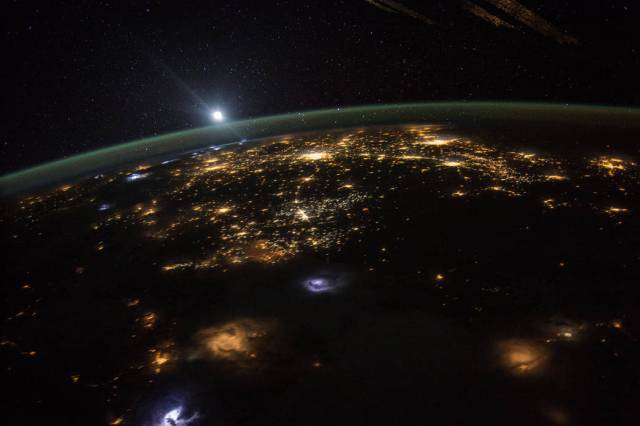

Commercial Space Frequently Asked Questions

NASA Shares Medical Expertise with New Space Station Partners

NASA’s Lola Fatoyinbo Receives Royal Geographical Society Prize

Earth Day Toolkit

NASA Names Finalists of the Power to Explore Challenge
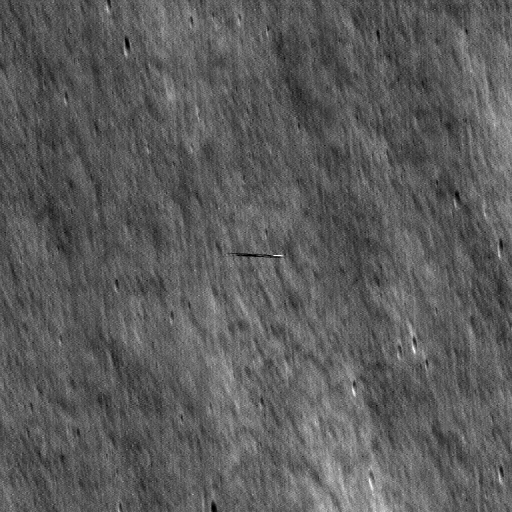
NASA’s LRO Finds Photo Op as It Zips Past SKorea’s Danuri Moon Orbiter
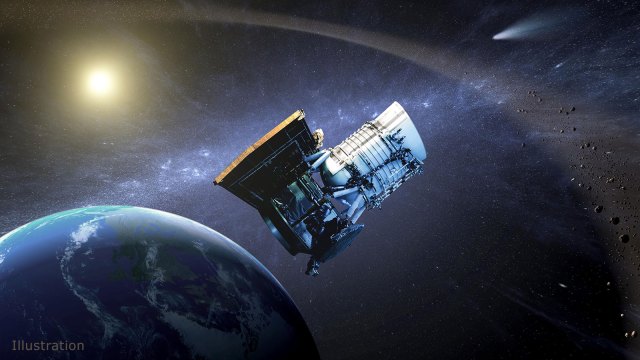
NASA’s NEOWISE Extends Legacy With Decade of Near-Earth Object Data
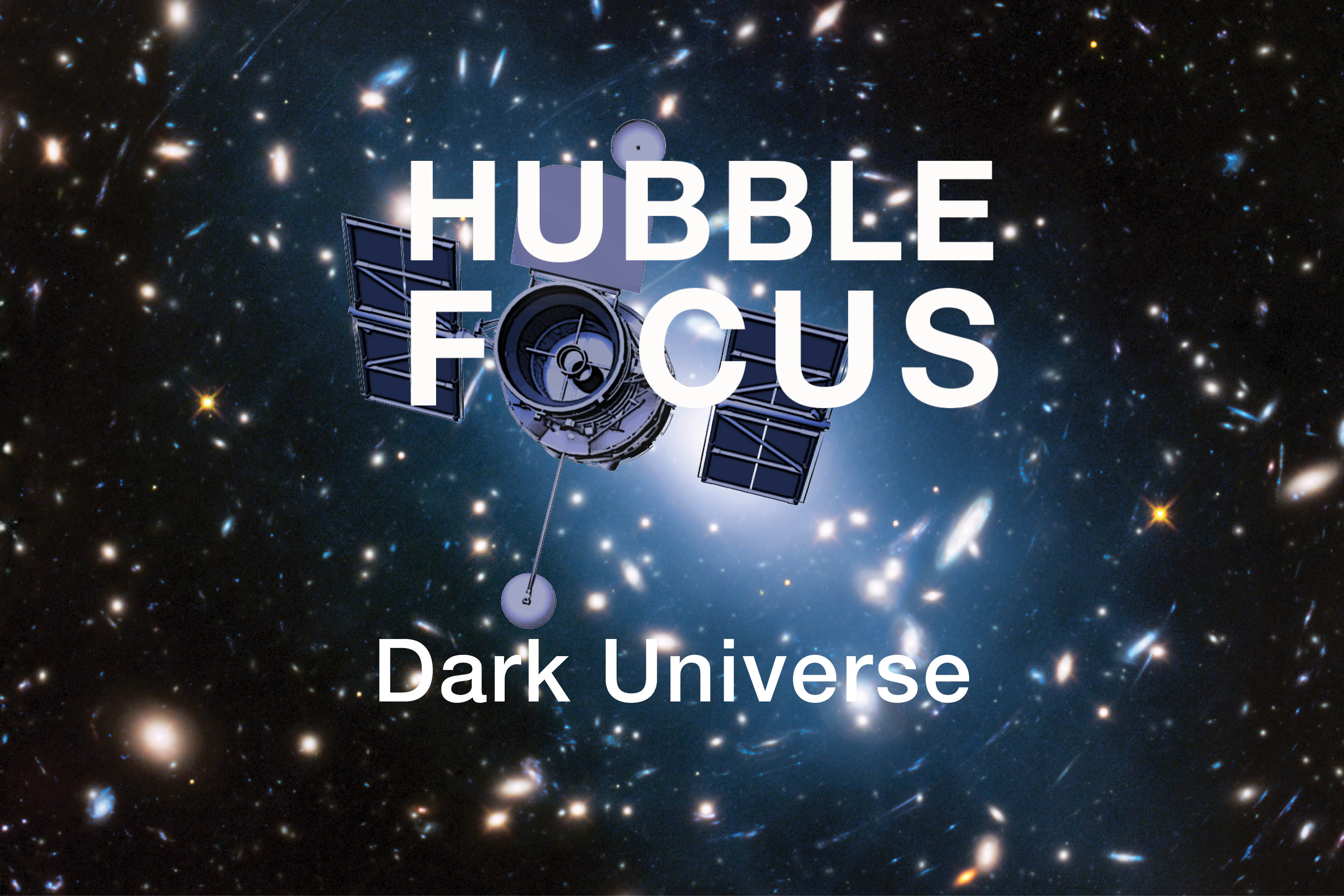
NASA’s New Hubble E-Book Spotlights Universe’s Best-Kept Dark Secrets
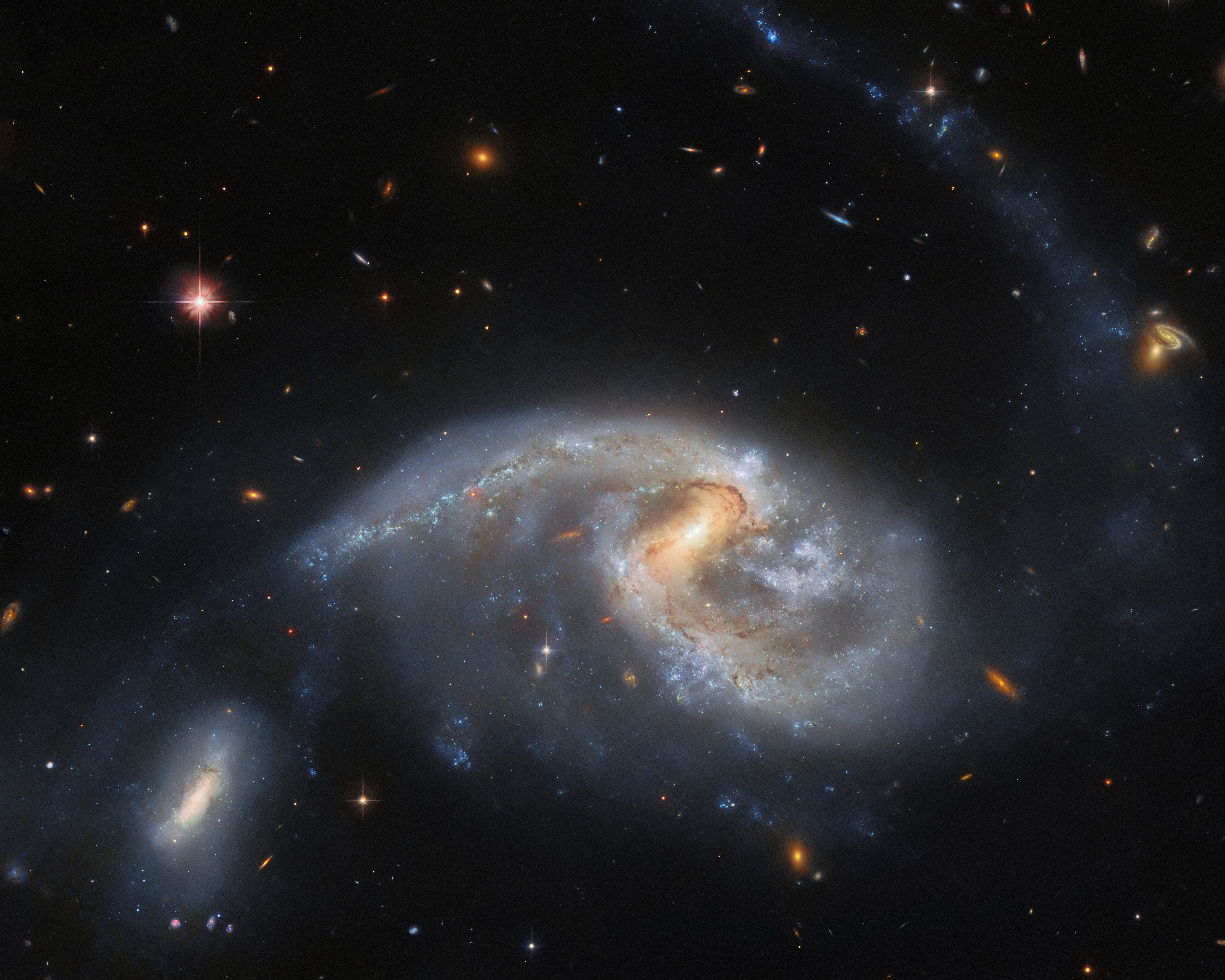
Hubble Peers at Pair of Closely Interacting Galaxies
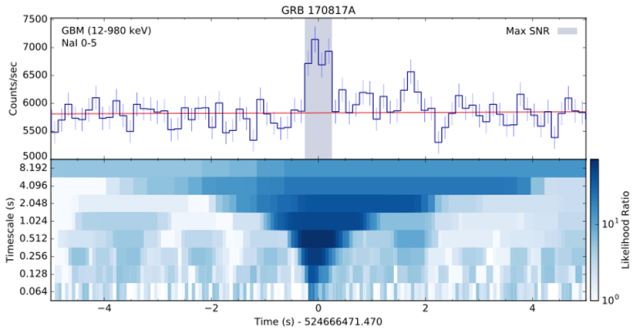
SRPD Gamma-ray Astrophysics
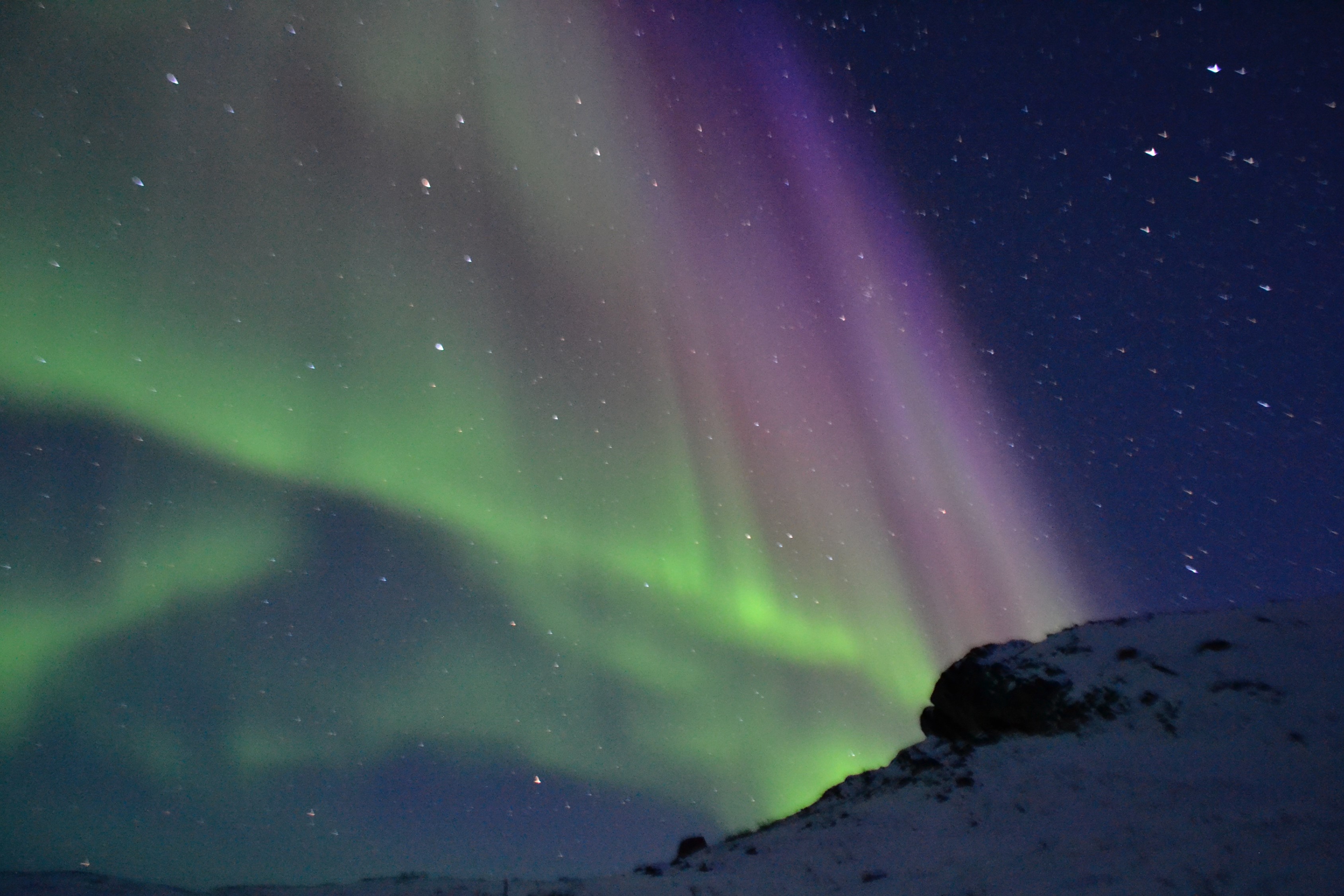
Making Ultra-fast Electron Measurements in Multiple Directions to Reveal the Secrets of the Aurora

NASA Langley Team to Study Weather During Eclipse Using Uncrewed Vehicles

NASA Noise Prediction Tool Supports Users in Air Taxi Industry

ARMD Solicitations

Tech Today: Synthetic DNA Diagnoses COVID, Cancer

David Woerner

NASA Partnerships Bring 2024 Total Solar Eclipse to Everyone

Launch Week Event Details

La presentación del X-59 de la NASA personifica la tradición aeronáutica
From studies that seek to understand how the human body adapts to time in space to research on spacesuits and spacecraft, NASA works to ensure the safety of astronauts as they push the boundaries of space exploration.
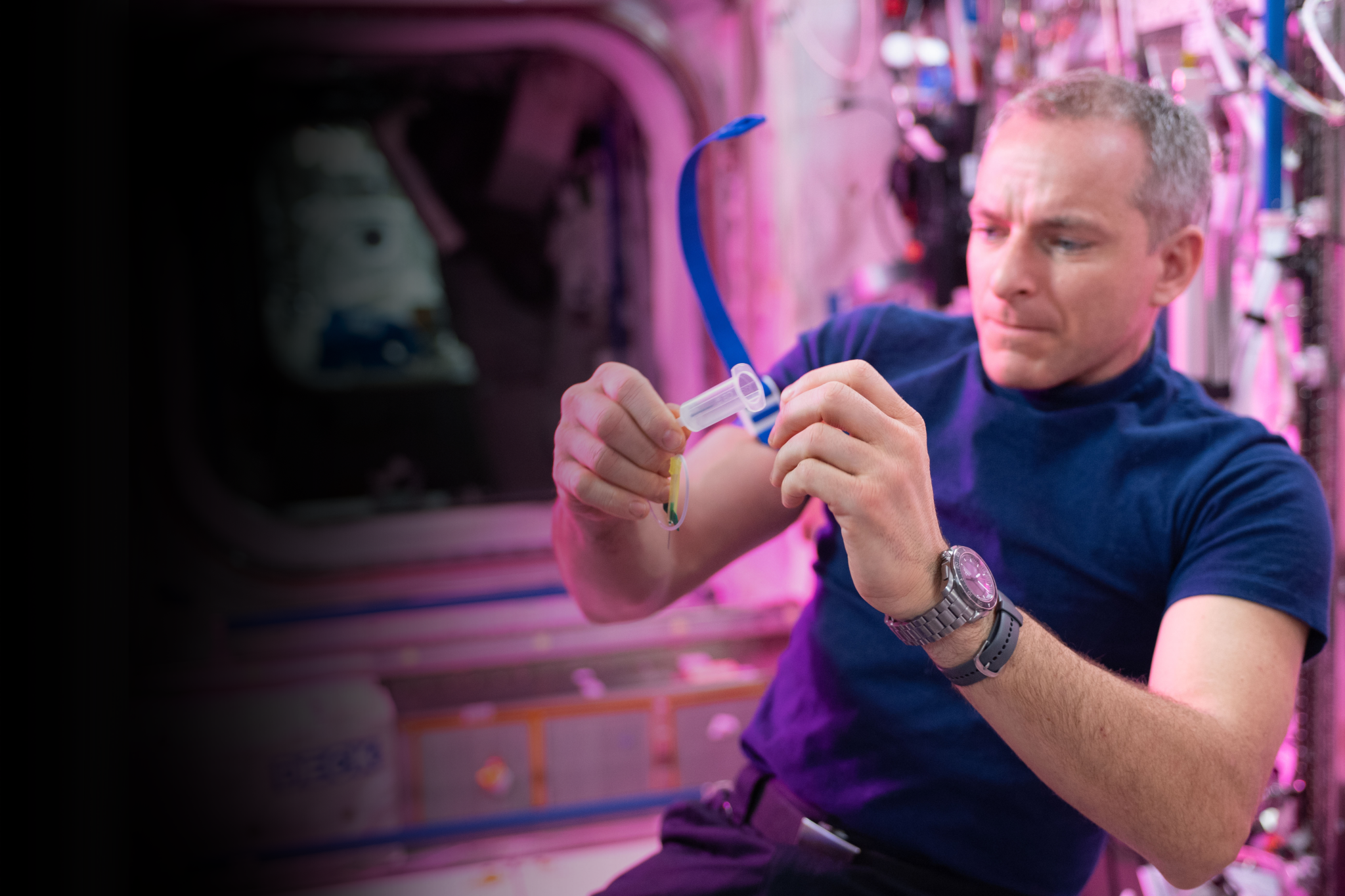
The Body in Space
Research in space, research on earth, extended stays in space, collaborate with us.
What happens to the human body during spaceflight?
Spaceflight affects bones, muscles, vision, and more. Life on the International Space Station unfolds in close quarters, which could affect astronauts’ moods. Travel to the Moon, Mars, and beyond will require new systems to provide medical care far from Earth. Learn more about the changes humans may undergo during spaceflight, as well as the steps NASA takes to keep astronauts healthy and safe.
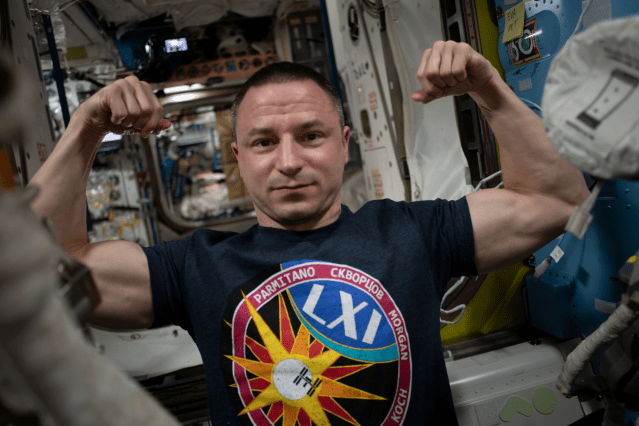
Studies on the space station help prepare future crew for trips into deeper space.
NASA will soon send astronauts to the Moon, and will one day send astronauts to Mars. To get mission-ready, NASA seeks to learn all they can about how human physiology and psychology changes while astronauts live and work on the space station. Learn more about how scientists seek to maintain the health and well-being of crew members during and after their missions.
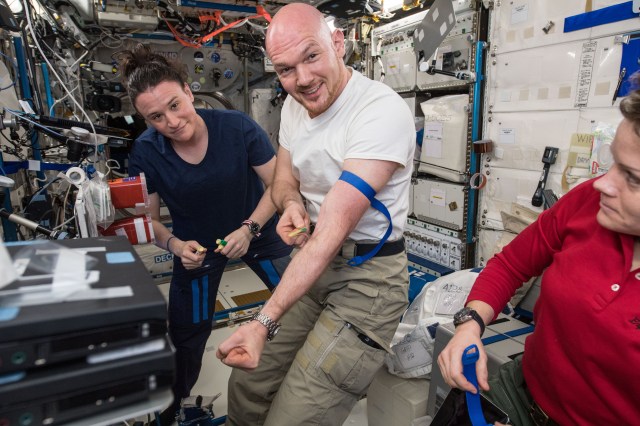
NASA conducts Earth-bound simulations of life in space.
Simulated space missions conducted on Earth help NASA examine crew health and team dynamics without launching into space. Some simulations happen in closed laboratory settings, others take place in remote regions like Antarctica. Using such missions, scientists can study in detail and in larger populations how humans adapt to challenges astronauts may encounter on missions to the Moon and Mars.
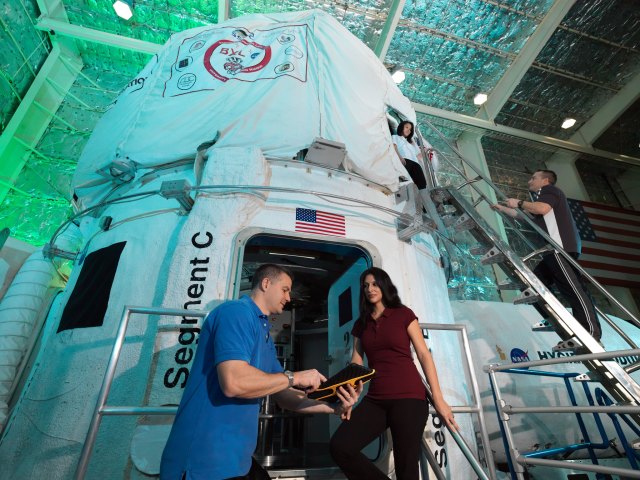
Learn more about the record-holders for the longest continuous spaceflights by U.S. astronauts.
Frank Rubio, Mark Vande Hei, Scott Kelly, Christina Koch, and Peggy Whitson have spent an extended amount of time in space, helping to pave the way for even longer, future exploration missions. Their missions help researchers better understand how the human body adapts to the extreme environment of space for more distant missions to the Moon, Mars, and beyond.
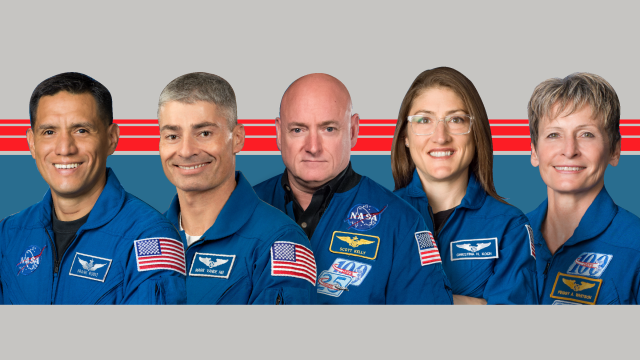
Learn how you can help NASA prepare for future spaceflight.
Are you developing innovative ways to keep astronauts healthy and mission-ready as space travel expands to the Moon, Mars, and beyond? Partner with NASA’s Human Research Program (HRP)! Check out information on NSPIRES and internships, and explore our how-to guides for working with us.
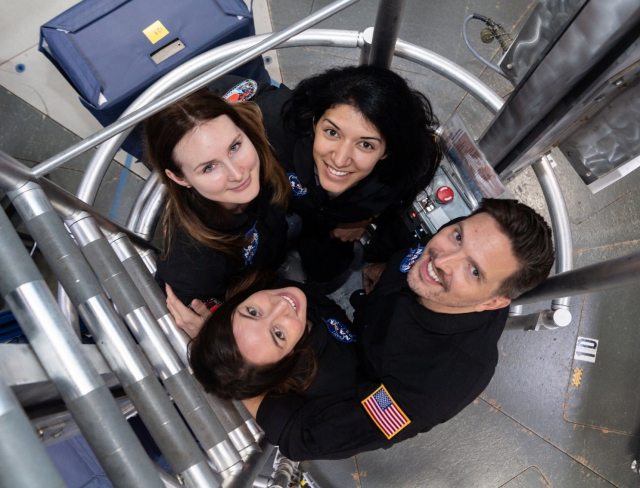
Spacewalk Spacesuit Basics
Spacesuits are much more than a set of clothes astronauts wear. However, like a set of clothes, different suits serve different…

Staying Healthy in Space
Experiments to Unlock How Human Bodies React to Long Space Journeys
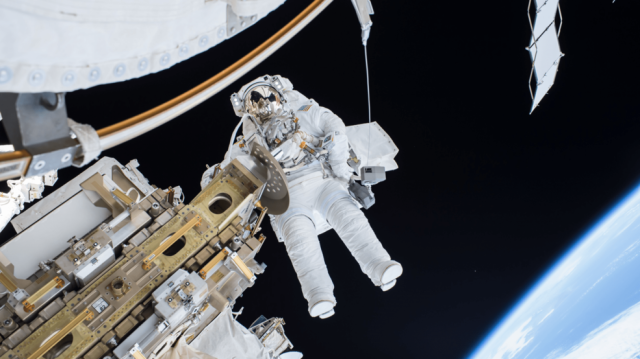
NASA Harnesses US Navy Spinning Device to Simulate Spaceflight

Isolation – What Can We Learn From the Experiences of NASA Astronauts?
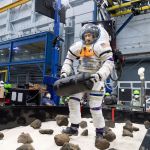
New Tests Evaluate Mission Readiness of Astronauts Upon Landing
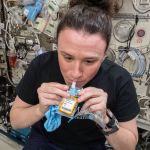
Scientists Probe How Long-Term Spaceflight Alters Immunity
Top Five Technologies Needed for a Spacecraft to Survive Deep Space
When a spacecraft built for humans ventures into deep space, it requires an array of features to keep it and…
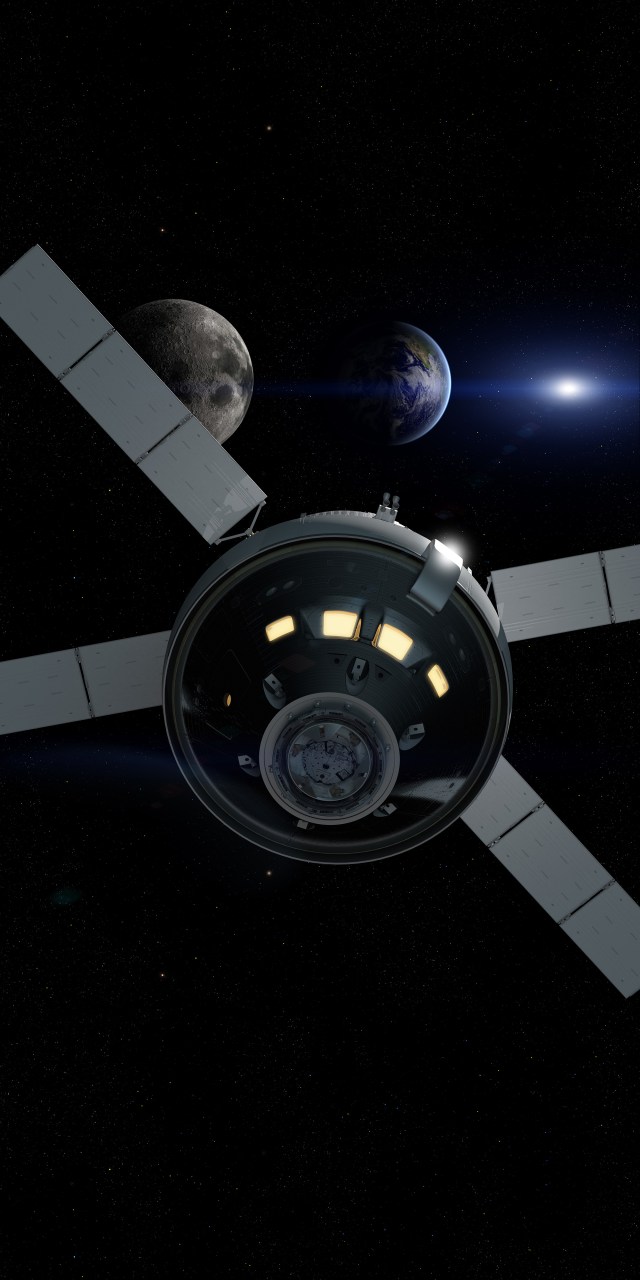
Food in Space
Astronauts require food that is nutritious, appetizing, long-lasting, easy to make, and more. We strive to continuously improve the quality of space food and to satisfy the dietary needs of crew members on increasingly longer and more distant spaceflight missions.
The Menu for Mars: Designing a Deep Space Food System
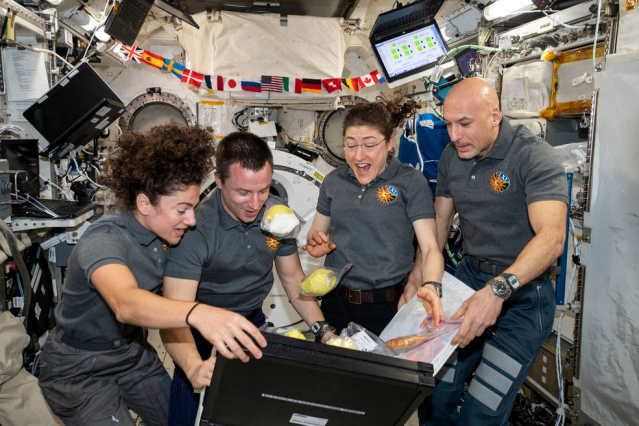
How Does Spaceflight Change Food Appeal?

Enhanced Diet May Help Astronauts Adapt to Spaceflight
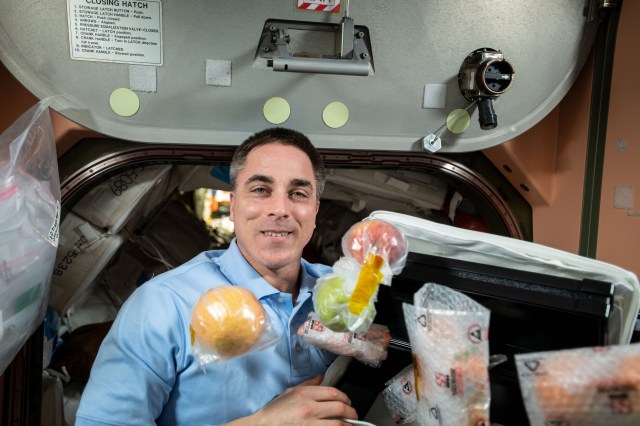
Space simulations on Earth as a research tool
Take a peek into the lives of crew on a simulated mission to Mars. Confined inside NASA's Human Exploration Research Analog (HERA), these crew help researchers study how teams overcome isolation and confinement to accomplish mission-critical tasks.
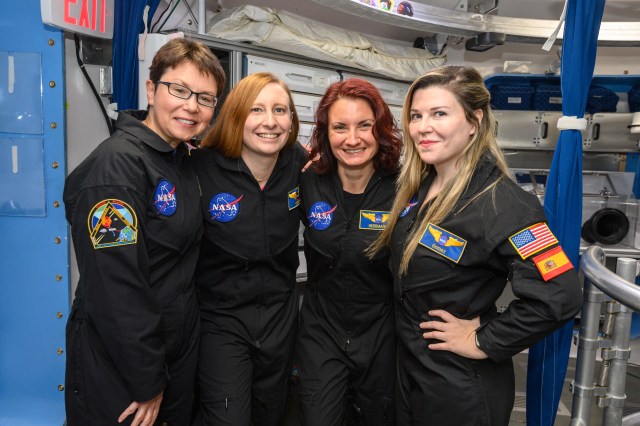
Benefits to Humanity
Space exploration unites the world to inspire the next generation, make ground-breaking discoveries, and create new opportunities.
Technologies and missions we develop for human spaceflight have thousands of applications on Earth, boosting the economy, creating new career paths, and advancing everyday technologies all around us.
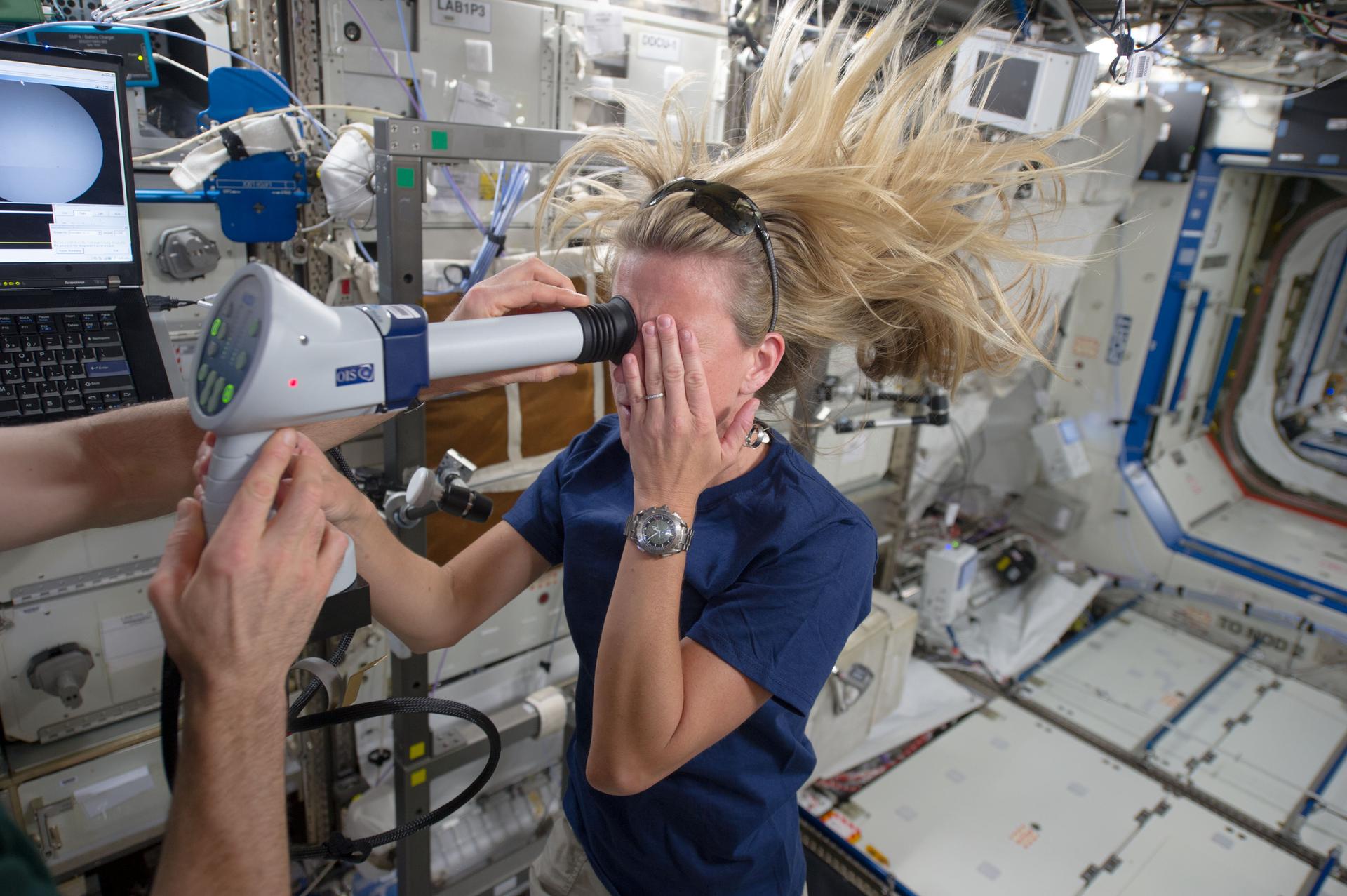
Discover More Topics From NASA
Human Research Program

Space Station Research and Technology

- Subscribe to BBC Science Focus Magazine
- Previous Issues
- Future tech
- Everyday science
- Planet Earth
- Newsletters
Everything you need to know about space travel (almost)
We're a long way from home...
Paul Parsons
When did we first start exploring space?
The first human-made object to go into space was a German V2 missile , launched on a test flight in 1942. Although uncrewed, it reached an altitude of 189km (117 miles).
Former Nazi rocket scientists were later recruited by both America and Russia (often at gunpoint in the latter case), where they were instrumental in developing Intercontinental Ballistic Missiles (ICBMs) – rockets capable of carrying nuclear weapons from one side of the planet to the other.

It was these super-missiles that formed the basis for the space programmes of both post-war superpowers. As it happened, Russia was the first to reach Earth orbit, when it launched the uncrewed Sputnik 1 in October 1957, followed a month later by Sputnik 2, carrying the dog Laika – the first live animal in space.
The USA sent its first uncrewed satellite, Explorer 1, into orbit soon after, in January 1958. A slew of robotic spaceflights followed, from both sides of the Atlantic, before Russian cosmonaut Yuri Gagarin piloted Vostok 1 into orbit on 12 April 1961, to become the first human being in space . And from there the space race proper began, culminating in Neil Armstrong and Buzz Aldrin becoming the first people to walk on the Moon as part of NASA's Apollo programme .
Why is space travel important?
Space exploration is the future. It satisfies the human urge to explore and to travel, and in the years and decades to come it could even provide our species with new places to call home – especially relevant now, as Earth becomes increasingly crowded .
Extending our reach into space is also necessary for the advancement of science. Space telescopes like the Hubble Space Telescope and probes to the distant worlds of the Solar System are continually updating, and occasionally revolutionising, our understanding of astronomy and physics.
- Subscribe to the Science Focus Podcast on these services: Acast , iTunes , Stitcher , RSS , Overcast
But there are also some very practical reasons, such as mining asteroids for materials that are extremely rare here on Earth.
One example is the huge reserve of the chemical isotope helium-3 thought to be locked away in the soil on the surface of the Moon . This isotope is a potential fuel for future nuclear fusion reactors – power stations that tap into the same source of energy as the Sun. Unlike other fusion fuels, helium-3 gives off no hard-to-contain and deadly neutron radiation.
However, for this to happen the first challenge to overcome is how to build a base on the Moon. In 2019, China's Chang’e 4 mission marked the beginning of a new space race to conquer the Moon, signalling their intent to build a permanent lunar base , while the NASA Artemis mission plans to build a space station, called Lunar Orbital Platform-Gateway , providing a platform to ferry astronauts to the Moon's surface.
Could humans travel into interstellar space and how would we get there?
It’s entirely feasible that human explorers will visit the furthest reaches of our Solar System. The stars, however, are another matter. Interstellar space is so vast that it takes light – the fastest thing we know of in the Universe – years, centuries and millennia to traverse it. Faster-than-light travel may be possible one day, but is unlikely to become a reality in our lifetimes.
It’s not impossible that humans might one day cross this cosmic gulf, though it won’t be easy. The combustion-powered rocket engines of today certainly aren’t up to the job – they just don’t use fuel efficiently enough. Instead, interstellar spacecraft may create a rocket-like propulsion jet using electric and magnetic fields. This so-called ‘ ion drive ’ technology has already been tested aboard uncrewed Solar System probes.

Another possibility is to push spacecraft off towards the stars using the light from a high-powered laser . A consortium of scientists calling themselves Breakthrough Starshot is already planning to send a flotilla of tiny robotic probes to our nearest star, Proxima Centauri, using just this method.
Though whether human astronauts could survive such punishing acceleration, or the decades-long journey through deep space, remains to be seen.
How do we benefit from space exploration?
Pushing forward the frontiers of science is the stated goal of many space missions . But even the development of space travel technology itself can lead to unintended yet beneficial ‘spin-off’ technologies with some very down-to-earth applications.
Notable spin-offs from the US space programme, NASA, include memory foam mattresses, artificial hearts, and the lubricant spray WD-40. Doubtless, there are many more to come.
Read more about space exploration:
- The next giant leaps: The UK missions getting us to the Moon
- Move over, Mars: why we should look further afield for future human colonies
- Everything you need to know about the Voyager mission
- 6 out-of-this-world experiments recreating space on Earth
Space exploration also instils a sense of wonder, it reminds us that there are issues beyond our humdrum planet and its petty squabbles, and without doubt it helps to inspire each new generation of young scientists. It’s also an insurance policy. We’re now all too aware that global calamities can and do happen – for instance, climate change and the giant asteroid that smashed into the Earth 65 million years ago, leading to the total extinction of the dinosaurs .
The lesson for the human species is that we keep all our eggs in one basket at our peril. On the other hand, a healthy space programme, and the means to travel to other worlds, gives us an out.
Is space travel dangerous?
In short, yes – very. Reaching orbit means accelerating up to around 28,000kph (17,000mph, or 22 times the speed of sound ). If anything goes wrong at that speed, it’s seldom good news.
Then there’s the growing cloud of space junk to contend with in Earth's orbit – defunct satellites, discarded rocket stages and other detritus – all moving just as fast. A five-gram bolt hitting at orbital speed packs as much energy as a 200kg weight dropped from the top of an 18-storey building.

And getting to space is just the start of the danger. The principal hazard once there is cancer-producing radiation – the typical dose from one day in space is equivalent to what you’d receive over an entire year back on Earth, thanks to the planet’s atmosphere and protective magnetic field.
Add to that the icy cold airless vacuum , the need to bring all your own food and water, plus the effects of long-duration weightlessness on bone density, the brain and muscular condition – including that of the heart – and it soon becomes clear that venturing into space really isn’t for the faint-hearted.
When will space travel be available to everyone?
It’s already happening – that is, assuming your pockets are deep enough. The first self-funded ‘space tourist’ was US businessman Dennis Tito, who in 2001 spent a week aboard the International Space Station (ISS) for the cool sum of $20m (£15m).
Virgin Galactic has long been promising to take customers on short sub-orbital hops into space – where passengers get to experience rocket propulsion and several minutes of weightlessness, before gliding back to a runway landing on Earth, all for $250k (£190k). In late July 2020, the company unveiled the finished cabin in its SpaceShipTwo vehicle, suggesting that commercial spaceflights may begin shortly.

Meanwhile, Elon Musk’s SpaceX , which in May 2020 became the first private company to launch a human crew to Earth orbit aboard the Crew Dragon , plans to offer stays on the ISS for $35k (£27k) per night. SpaceX is now prototyping its huge Starship vehicle , which is designed to take 100 passengers from Earth to as far afield as Mars for around $20k (£15k) per head. Musk stated in January that he hoped to be operating 1,000 Starships by 2050.
10 Short Lessons in Space Travel by Paul Parsons is out now (£9.99, Michael O'Mara)
- Buy now from Amazon UK , Foyles , WH Smith and Wordery
Share this article

- Terms & Conditions
- Privacy policy
- Cookies policy
- Code of conduct
- Magazine subscriptions
- Manage preferences
Space Words
Words related to space.
Below is a massive list of space words - that is, words related to space. The top 4 are: galaxy , stardust , universe and cosmos . You can get the definition(s) of a word in the list below by tapping the question-mark icon next to it. The words at the top of the list are the ones most associated with space, and as you go down the relatedness becomes more slight. By default, the words are sorted by relevance/relatedness, but you can also get the most common space terms by using the menu below, and there's also the option to sort the words alphabetically so you can get space words starting with a particular letter. You can also filter the word list so it only shows words that are also related to another word of your choosing. So for example, you could enter "galaxy" and click "filter", and it'd give you words that are related to space and galaxy.
You can highlight the terms by the frequency with which they occur in the written English language using the menu below. The frequency data is extracted from the English Wikipedia corpus, and updated regularly. If you just care about the words' direct semantic similarity to space, then there's probably no need for this.
There are already a bunch of websites on the net that help you find synonyms for various words, but only a handful that help you find related , or even loosely associated words. So although you might see some synonyms of space in the list below, many of the words below will have other relationships with space - you could see a word with the exact opposite meaning in the word list, for example. So it's the sort of list that would be useful for helping you build a space vocabulary list, or just a general space word list for whatever purpose, but it's not necessarily going to be useful if you're looking for words that mean the same thing as space (though it still might be handy for that).
If you're looking for names related to space (e.g. business names, or pet names), this page might help you come up with ideas. The results below obviously aren't all going to be applicable for the actual name of your pet/blog/startup/etc., but hopefully they get your mind working and help you see the links between various concepts. If your pet/blog/etc. has something to do with space, then it's obviously a good idea to use concepts or words to do with space.
If you don't find what you're looking for in the list below, or if there's some sort of bug and it's not displaying space related words, please send me feedback using this page. Thanks for using the site - I hope it is useful to you! 🐥

- constellation
- interstellar
- solar system
- extraterrestrial
- cosmic dust
- dark matter
- speed of light
- spacewalking
- andromeda galaxy
- celestial body
- gravitation
- asteroid belt
- proxima centauri
- elliptical galaxy
- heliosphere
- euclidean geometry
- zero gravity
- light-years
- space station
- nucleosynthesis
- celestial sphere
- alpha centauri
- parallel universe
- earth orbit
- spiral galaxy
- dwarf planet
- dark energy
- spiral nebula
- morning star
- astrophysical
- fundamental interaction
- electromagnetism
- trans neptunian
- yuri gagarin
- galaxy cluster
- space-time continuum
- dwarf galaxy
- globular cluster
- electromagnetic spectrum
- epsilon aurigae
- kuiper belt
- general relativity
- expansion of the universe
- omega centauri
- ultimate fate of the universe
- black dwarf
- goldilocks zone
- quantum mechanics
- orbiting outpost
- habitable zone
- space velocity
- accelerating expansion of the universe
- hadron epoch
- spaceflight
- weightlessness
- big bang nucleosynthesis
- stellar nucleosynthesis
- theoretical physics
- cepheid variable
- milky way galaxy
- celestial object
- giant planet
- eclipsing binary
- age of the universe
- thermal equilibrium
- neutron star
- extragalactic
- sub brown dwarf
- outer solar system
- luminosities
- cold dark matter
- international space station
- center of mass
- supercluster
- shuttle discovery
- white dwarf
- minkowski space
- star cluster
- interplanetary
- subplanetary
- observable universe
- astrophilia
- interplanetary space
- structure formation
- outer space
- cosmological principle
- lambda-cdm model
- square feet
- galax urceolata
- nasa astronaut
- space agency
- space shuttle
- shuttle atlantis
- angular momentum
- newton's law of universal gravitation
- active galactic nucleus
- atomic physics
- many-worlds interpretation
- metric expansion of space
- strong nuclear force
- accommodate
- planetary society
- quantum physics
- soyuz spacecraft
- gravitational singularity
- messier object
- heliocentrism
- magellanic cloud
- astronomers
- brown dwarf
- aggregation
- cosmic microwave background
- superplanet
- extraplanetary
- other planet
- lunar occultation
- planetary body
- astrophysics
- islamic astronomy
- planetary nebula
- gravitational attraction
- elementary particle
- human spaceflight
- microgravity
- nicolaus copernicus
- nuclear physics
- mission control
- shuttle missions
- large magellanic cloud
- shape of the universe
- dimensional
- open cluster
- blackbody spectrum
- interstellar medium
- interstellar space
- planetary system
- subatomic particle
- metallicity
- protoplanet
- circumjovial
- transorbital
- planetscape
- astronomical object
- interstellar planet
- our solar system
- in universe
- minor planet
- outer planet
- judicial astrology
- space reconnaissance
- inferior planet
- space debris
- orbit earth
- photosphere
- electromagnetic radiation
- irregular galaxy
- lepton epoch
- weak nuclear force
- photon epoch
- space exploration
- harlow shapley
- electroweak
- extragalactic nebula
- dwarf spheroidal galaxy
- galaxy filament
- macrocosmic
- photoevaporation
- magmasphere
- many planet
- planetary object
- nine planet
- superior planet
- major planet
- satellite planet
- silicate planet
- inner solar system
- goldilocks planet
- in outerspace
- space alien
- physical cosmology
- cosmological constant
- inner planet
- proplanetary disk
- gravitational interaction
- chemical element
- albert einstein
- physical constant
- heavenly body
- geoheliocentrism
- planet strike
- spectral line
- cramped quarters
- accumulation
- planetesimal
- recombination
- space communication
- large-scale structure of the cosmos
- russian soyuz
- heber curtis
- jovian planet
- olympus mon
- physical law
- isaac newton
- william herschel
- electric charge
- comoving distance
- local group
- wander star
- carbon planet
- thomas wright
- hydrogen atom
- annihilation
- portability
- universe of discourse
- environment
- standard model
- soap bubble
- parking bays
- immanuel kant
- square foot
- greek language
- homogeneity
- middle ages
- english language
- subpopulation
- ancient greece
- parking spaces
- friedmann–lemaître–robertson–walker metric
- indian philosophy
- netherlands
- kitchenette
That's about all the space related words we've got! I hope this list of space terms was useful to you in some way or another. The words down here at the bottom of the list will be in some way associated with space, but perhaps tenuously (if you've currenly got it sorted by relevance, that is). If you have any feedback for the site, please share it here , but please note this is only a hobby project, so I may not be able to make regular updates to the site. Have a nice day! 🐜
Space travel terms
Space travel
Examples from our community, 1,381 results for 'space travel'.

Space Travel Word Search
Description.
SPACE STATION TOUCH DOWN COSMONAUT ASTTONAUT SHUTTLE ORBITER MISSION BOOSTER CAPSULE FLIGHT ROCKET LAUNCH APOLLO PROBE NASA

Space Exploration
Word Search

Space Shuttle Word Search

Flight and Space

SPACE EXPLORATION BINGO
Frequently asked questions, what is a word search.
A word search is a puzzle where there are rows of letters placed in the shape of a square, and there are words written forwards, backwards, horizontal, vertical or diagonal. There will be a list of words for the player to look for and the goal of the player is to find those words hidden in the word search puzzle, and highlight them.
How do I choose the words to use in my word search?
Once you’ve picked a theme, choose words that have a variety of different lengths, difficulty levels and letters. You don’t need to worry about trying to fit the words together with each other because WordMint will do that for you!
How are word searches used in the classroom?
Word search games are an excellent tool for teachers, and an excellent resource for students. They help to encourage wider vocabulary, as well as testing cognitive abilities and pattern-finding skills.
Because the word search templates are completely custom, you can create suitable word searches for children in kindergarten, all the way up to college students.
Who is a word search suitable for?
One of the common word search faq’s is whether there is an age limit or what age kids can start doing word searches. The fantastic thing about word search exercises is, they are completely flexible for whatever age or reading level you need.
Word searches can use any word you like, big or small, so there are literally countless combinations that you can create for templates. It is easy to customise the template to the age or learning level of your students.
How do I create a word search template?
For the easiest word search templates, WordMint is the way to go!
Pre-made templates
For a quick an easy pre-made template, simply search through WordMint’s existing 500,000+ templates . With so many to choose from, you’re bound to find the right one for you!
Create your own from scratch
- Log in to your account (it’s free to join!)
- Head to ‘My Puzzles’
- Click ‘Create New Puzzle’ and select ‘Word Search’
- Select your layout, enter your title and your chosen words
- That’s it! The template builder will create your word search template for you and you can save it to your account, export as a Word document or PDF and print!
How can I print my word search template?
All of our templates can be exported into Microsoft Word to easily print, or you can save your work as a PDF to print for the entire class. Your puzzles get saved into your account for easy access and printing in the future, so you don’t need to worry about saving them at work or at home!
Can I create a word search in other languages?
Word searches are a fantastic resource for students learning a foreign language as it tests their reading comprehension skills in a fun, engaging way.
We have full support for word search templates in Spanish, French and Japanese with diacritics including over 100,000 images.
The 5 stages of the 2024 total solar eclipse explained for April 8
On Monday (April 8), a total solar eclipse will sweep across the Americas. Here's how it will play out.
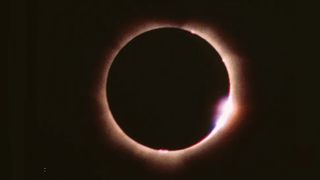
Stage 1: First contact
Stage 2: second contact, stage 3: totality, stage 4: third contact, stage 5: fourth contact.
On Monday, April 8, the 2024 total solar eclipse will sweep through the sky over North America.
While all of North America and Central America will experience at least a partial solar eclipse , those within a path with a width of approximately 115 miles (185 kilometers) passing over 15 U.S. States. Mexico, and Canada will also witness a totality as the moon entirely covers the disk of the sun.
You can watch the total solar eclipse live on Space.com . You can also keep up with all the eclipse-related action with our total solar eclipse 2024 live updates blog.
Don't be in the dark about the 2024 total eclipse
There are three major types of solar eclipse. A total solar eclipse like that on April 8 occurs when the moon is relatively close to Earth and blocks the entire disk of the sun.
Because the moon's orbit around our planet is an ellipse, sometimes it is further away and thus appears smaller. An eclipse at these times sees the moon only an obscure part of the solar disk, with the sun appearing as a glowing ring of fire. These events are called annular solar eclipses , and the last one seen over the U.S. occurred on Oct. 14, 2023.
Finally, a partial solar eclipse is an event that happens when the Earth, moon, and sun are not perfectly aligned, resulting in the lunar disk only covering part of our star, making the sun appear as if a bite has been taken out of it. Partial eclipses also happen at the beginning and ending stages of total and annular eclipses.
On April 8, 2024, the moon will be in its new moon phase , and it will look relatively large, meaning it is capable of covering 100% of the sun's disk as viewed from the narrow path of totality. The fraction of the diameter of the sun covered by the moon is known as the magnitude of a solar eclipse . On April 8, 2024, this value will be 1.0566, according to EclipseWise.com , slightly more than total coverage.
Get the Space.com Newsletter
Breaking space news, the latest updates on rocket launches, skywatching events and more!
NASA has released an interactive map of the total eclipse, which space enthusiasts can use to track the totality as it drifts across the globe. However, location won't be the only factor affecting the appearance of the total solar eclipse on Monday. The eclipse will pass through 5 distinct stages, with each of these phases occurring at different times across different locations.
What are the stages of the annular solar eclipse?
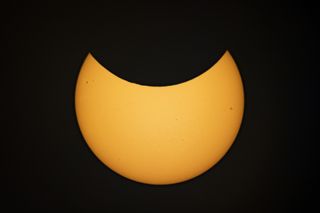
In the initial stage of the eclipse, the moon will begin to pass in front of the sun, kick-starting a partial solar eclipse. During this phase, the darkened lunar disk of the moon will make the sun appear as if a bite has been taken out of its illuminated face. This "bite" will get bigger and bigger as the totality approaches.
During the first stage of the total solar eclipse, some onlookers will be able to see rapidly moving, long, dark bands called " shadow bands " on the sides of buildings or the ground. Bailey's beads , caused by light streaming through the valleys on the horizon of the moon, may also be visible at the moon's edges during this initial stage. These phenomena repeat during the second partial eclipse that occurs after totality.
On April 8, this stage of the partial eclipse will first be seen near Pu‘uali‘i, Hawaii, at 6:27 a.m. local time (12:27 p.m. EDT, 1627 GMT).

First contact will last for between 70 and 80 minutes, and its conclusion will be marked by a single bright spot, or " diamond ring ," appearing at the edge of the moon. This marks the second contact stage and heralds the oncoming totality.
On April 8, the total solar eclipse will make landfall at Mazatlán, Sinaloa, Mexico, at 9:51 a.m. local time (12:51 p.m. EDT, 16:51 GMT).
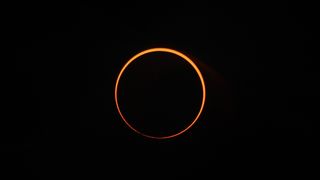
Stage 3 and the mid-point of the total solar eclipse is the totality. At this point, the moon completely covers the solar disk. During the totality of the outer atmosphere of the sun, the corona may become visible as white streamers at the edge of the moon. This region is usually washed out by bright light from the solar surface, the photosphere. The inner atmosphere of the sun, the chromosphere , may be visible as a wispy aura around the edge of the moon.
The totality may also make stars and planets visible in the darkened sky that are usually not visible from America during daylight hours.
On April 8, the first location to experience totality will be Mazatlán, Sinaloa, Mexico at 11:07 a.m. local time (2:07 p.m. EDT, 1807 GMT). The first location to experience totality in the U.S. will be Near Florentino Ramos Colonia, Texas, at 1:27 p.m. local time (2:27 p.m. EDT, 1827 GMT).
The duration of the totality depends on the path from which the eclipse is viewed. In Mexico, totality will last for 40 minutes and 43 seconds. Skywatchers in the U.S. will collectively experience totality for 67 minutes and 58 seconds. Onlookers in Canada will experience the totality of the solar eclipse for 34 minutes and 4 seconds.

The fourth stage of the total solar eclipse, third contact, will see the moon start to move away from the disk of the sun, thus ending the totality and starting the second partial eclipse period. Brightening appears on the opposite side of the moon as it did during the second contact period. At this time, skywatchers will get another chance to spot Baily's Beads along the edge of the moon and shadow bands on the buildings and ground around them, with this stage mirroring the second contact stage.
The total solar eclipse ends on the Atlantic coast at 5:16 p.m. local time (3:46 p.m. EDT, 1946 GMT).
The fifth and final stage of the total solar eclipse. The moon moves away from the disk of the sun, meaning that at fourth contact, the moon is no longer even partially eclipsing the sun. At this point, 2024's total solar eclipse will be over.
On April 8, on the Atlantic coast of Newfoundland and Labrador, the partial eclipse phase ends at 6:18 p.m. local time (4:48 p.m. EDT, 2048 GMT).
— A 'horned' comet may be visible during the 2024 total solar eclipse
— How photos of the April 8 solar eclipse will help us understand of the sun's atmosphere
— How fast will April's total solar eclipse travel?
If you intend to view any of these stages, the most important thing to consider is how to safely view it. Looking at the sun without adequate protection at any time is harmful to the eyes, so eclipse watchers should take precautions on Monday.
Sunglasses, regardless of how dark they are, can't protect the eyes from the effect of the sun, so specialized eclipse glasses made from safe solar filter materials will be needed. If skywatchers intend to watch the event with a telescope, special filters will be needed to make this a safe viewing experience.
Our how to observe the sun safely guide tells you everything you need to know about safe solar observations.
Following the 2024 total solar eclipse, skywatchers in the U.S. will next get the opportunity to see a total solar eclipse on March 30, 2033 . The totality of this eclipse, which will last 2 minutes 37 seconds, will be visible in Alaska. Following this, on Aug. 23, 2044 , a total solar eclipse will be visible from the U.S. states of Montana, South Dakota, and North Dakota, as well as from much of Canada.
Under a year later, on Aug.12, 2045 , another total solar eclipse will sweep over the U.S., visible from California, Nevada, Utah, Colorado, New Mexico, Oklahoma, Kansas, Texas, Arkansas, Missouri, Mississippi, Louisiana, Alabama, Georgia, and Florida, as well as from the Caribbean, and South America.
Submit your photos! If you capture a photo of the April 8 total solar eclipse and would like to share it with Space.com's readers, send photos, videos, comments, and your name, location and content usage permission release to [email protected] .
Join our Space Forums to keep talking space on the latest missions, night sky and more! And if you have a news tip, correction or comment, let us know at: [email protected].

Robert Lea is a science journalist in the U.K. whose articles have been published in Physics World, New Scientist, Astronomy Magazine, All About Space, Newsweek and ZME Science. He also writes about science communication for Elsevier and the European Journal of Physics. Rob holds a bachelor of science degree in physics and astronomy from the U.K.’s Open University. Follow him on Twitter @sciencef1rst.
Satellite views of solar eclipse 2024: See the moon's shadow race across North America (video, photos)
Total solar eclipse 2024: Live updates
SpaceX launches 23 Starlink satellites in nighttime liftoff (photos)
Most Popular
By Stefanie Waldek April 09, 2024
By Daisy Dobrijevic April 08, 2024
By Alexander Cox April 08, 2024
By Monisha Ravisetti April 08, 2024
By Tariq Malik April 08, 2024
By Kimberly H. Breuer April 07, 2024
By Pedro Braganca April 07, 2024
By Mike Wall April 07, 2024
By Jeff Spry April 07, 2024
- 2 Satellite views of solar eclipse 2024: See the moon's shadow race across North America (video, photos)
- 3 Total solar eclipse 2024: Live updates
- 4 These solar eclipse 2024 photos from our readers are absolutely amazing (images, video)
- 5 I proposed to my fiancée under the diamond ring of the 2024 total solar eclipse. (She said 'Yes!')
Space: The $1.8 trillion opportunity for global economic growth
The space industry is approaching the next frontier, with each week bringing news of a major development somewhere in the world. Be it a test of a new rocket system, the launch of an innovative satellite, or a robotic exploration mission safely landing on the moon, activity in space is accelerating.
About the authors
This article is a collaborative effort by Alizée Acket-Goemaere, Ryan Brukardt , Jesse Klempner , Andrew Sierra, and Brooke Stokes, representing views from McKinsey’s Aerospace & Defense Practice and the World Economic Forum.
We estimate that the global space economy will be worth $1.8 trillion by 2035 (accounting for inflation), up from $630 billion in 2023. This figure includes both “backbone” applications—such as those for satellites, launchers, and services like broadcast television or GPS—and what we term “reach” applications”—those for which space technology helps companies across industries generate revenues. Uber, for example, relies on the combination of satellite signals and chips inside smartphones to connect drivers and riders and provide directions in every city.
In 2023, backbone applications made up $330 billion, or slightly greater than 50 percent, of the global space economy, while reach applications represented $300 billion. The expected annual growth rate for backbone and reach applications is twice the projected rate of GDP growth over the next decade (exhibit). 1 2023–2035 Global Nominal GDP growth forecast – Average scenario – McKinsey, Oxford Economics (January 2024). For comparison, the value estimates for space are similar to those for semiconductors (estimated at $600 billion in 2021 with 6 to 8 percent annual growth into the 2030s) 2 Ondrej Burkacky, Julia Dragon, and Nikolaus Lehmann, “ The semiconductor decade: A trillion-dollar industry ,” McKinsey, April 1, 2022. and roughly half of the projection for the global payments industry (estimated to reach $3.2 trillion in revenues by 2027). 3 On the cusp of the next payments era: Future opportunities for banks , McKinsey, September 18, 2023.
The growth drivers for the space economy include the need for greater connectivity via satellites, higher demand for positioning and navigation services on mobile phones, and increased demand for insights powered by AI and machine learning. These innovations are delivering greater benefits to a more diverse set of stakeholders than ever before, including companies in industries ranging from food and beverage to transportation. They may also help solve some of the world’s greatest challenges, such as climate change.
This report by the World Economic Forum and McKinsey shines a light on the important developments that will shape the space industry, and the industries adjacent to it, through 2035. As part of our research, we interviewed over 60 leaders and experts across the space sector and other segments to get a detailed view of the trajectory of space technology and its impact—often indirect—on a range of sectors. The insights from these interviews, combined with market forecasts and other data, will help answer three critical questions:
- How big will space’s “backbone” and its broader “reach” be across the world, by 2035?
- How will the essential factors determine the trajectory of the future space economy?
- How can space change the world beyond revenue growth?
For more information, including a detailed assessment of the space economy outlook by segment, download the full report, Space: The $1.8 trillion opportunity for economic growth .
Alizée Acket-Goemaere is a consultant in McKinsey’s Paris office; Ryan Brukardt is a senior partner in the Miami office; Jesse Klempner is a partner in the Washington, DC, office; Andrew Sierra is an associate partner in the Chicago office; and Brooke Stokes is a partner in the Southern California office.
This article was edited by Eileen Hannigan, a senior editor in the Boston office.
Explore a career with us
Related articles.
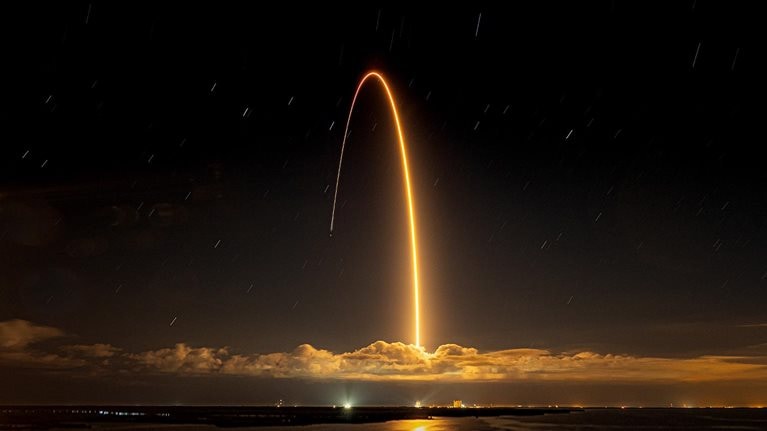
Space launch: Are we heading for oversupply or a shortfall?

Space: The missing element of your strategy
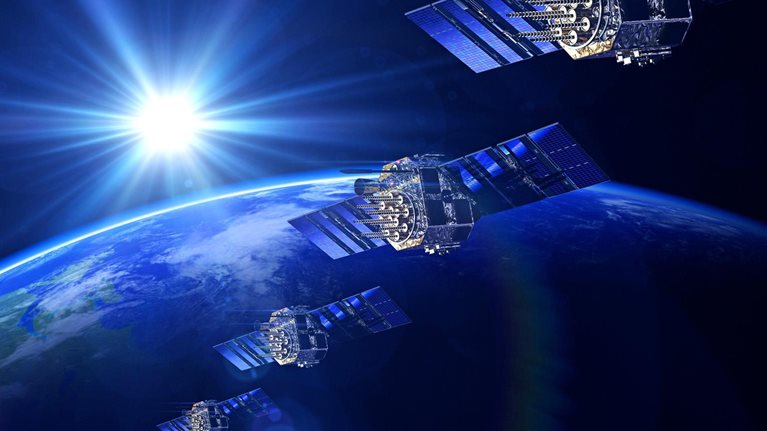
Expectations versus reality: Commercial-satellite constellations
When is the next total solar eclipse?

If you felt left out of the fun during Monday’s total solar eclipse , there will be other chances in the coming years to experience daytime temporarily turning to night as the Earth, the moon and the sun align .
The next total solar eclipse will occur on Aug. 12, 2026, but it will mostly pass over the Arctic Ocean. Totality, when the moon fully obscures the sun’s light, will be visible along a path that cuts through Russia, eastern Greenland, the western coast of Iceland, Spain and a tiny part of Portugal.
Then on Aug. 2, 2027, a total solar eclipse will be visible in Spain and across a swath of northern Africa.
After that, the next total solar eclipse will occur on March 30, 2033, but totality will be visible only from Alaska and Russia.
On Aug. 23, 2044, an eclipse’s path of totality will pass over some of the U.S.: Montana, North Dakota, South Dakota, parts of Canada and Greenland.
Then, finally, on Aug. 12, 2045, a total solar eclipse will once again trace a path from coast to coast across the continental U.S., similar to the one this year.

The path of totality for the 2045 eclipse will cut through California, Nevada, Utah, Colorado, New Mexico, Oklahoma, Kansas, Texas, Arkansas, Missouri, Mississippi, Louisiana, Alabama, Georgia and Florida before it continues on over the Caribbean and parts of South America.
During a total solar eclipse, the moon covers the face of the sun, temporarily masking its light and casting the moon’s shadow on Earth’s surface. People can see the moon fully block the sun from locations in the center of that shadow.
Denise Chow is a reporter for NBC News Science focused on general science and climate change.

IMAGES
VIDEO
COMMENTS
Space travel - related words and phrases | Cambridge SMART Vocabulary
Another way to say Space Travel? Synonyms for Space Travel (other words and phrases for Space Travel).
Words related to space travel can be a fascinating aspect of human language, as they encapsulate the vastness, complexity, and wonder of outer space. From technical jargon to visionary concepts, having a collection of these related words can be immensely helpful in understanding and discussing the various aspects of space exploration, astronomy ...
In other words, an orbit is the circular motion in which objects in space travel due to gravity's pull. For example, the moon orbits around the Earth and the Earth orbits around the sun in a circular motion. An object that orbits another is called its satellite. #36. Parallax.
Synonyms for space travel include space exploration, cosmic exploration, interstellar exploration, space research, galactic exploration, interplanetary exploration, planetary exploration, Solar System exploration, spaceflight and flight. Find more similar words at wordhippo.com!
space travel - Synonyms, related words and examples | Cambridge English Thesaurus
Solar system: A set that includes a star and all of the matter that orbits it, including planets, moons, asteroids, comets, and other objects. Solar wind: The constant stream of particles and energy emitted by the sun. Space weather: The conditions in space that can affect Earth, satellites, and space travel.
rocket flight. shuttle flight. flight. space navigation. flying into outer space. voyage outside the earth's atmosphere. astrogate. conquest of outer space. cosmonautics.
space travel: 1 n a voyage outside the Earth's atmosphere Synonyms: spacefaring , spaceflight Type of: voyage a journey to some distant place
go abroad. go camping. go into orbit. go riding. hop. v. incentive travel. Space Travel related words and phrases. Related words and phrases for Space Travel.
Definitions For Our List Of Words Related To Space Travel Astronaut. A person trained to travel and work in outer space. Rocket. A vehicle or device propelled by rocket engines, typically used for space exploration or launching satellites. Spaceship. A vehicle designed for travel or operation in outer space.
Astronaut lingo has been around as long as NASA itself. In fact, some of the earliest space slang was pretty hilarious, like referring to Cape Canaveral as "Malfunction Junction" or an astronaut's adjustable seat as a "barber chair.". Astronaut lingo has toned down quite a bit since the 1960s, and now it largely comprises jargon words ...
Full moon - Phase of the moon when it is halfway around its orbit from new moon and opposite the sun in the sky; the full disk is illuminated. -G-. Galactic disk - Disk of a spiral galaxy. Galactic nucleus - central region of a galaxy. Contains a high density of stars and gas and a super massive black hole.
Travel to the Moon, Mars, and beyond will require new systems to provide medical care far from Earth. Learn more about the changes humans may undergo during spaceflight, as well as the steps NASA takes to keep astronauts healthy and safe. NASA astronaut and Flight Engineer Andrew Morgan flexes his muscles in an airlock of the space station.
space exploration, investigation, by means of crewed and uncrewed spacecraft, of the reaches of the universe beyond Earth 's atmosphere and the use of the information so gained to increase knowledge of the cosmos and benefit humanity. A complete list of all crewed spaceflights, with details on each mission's accomplishments and crew, is ...
Everything you need to know about space travel (almost) - BBC Science Focus Magazine.
Space Travel Words. Below is a massive list of space travel words - that is, words related to space travel. The top 4 are: spacefaring, voyage, cruise and journey. You can get the definition (s) of a word in the list below by tapping the question-mark icon next to it. The words at the top of the list are the ones most associated with space ...
Below is a massive list of space words - that is, words related to space. The top 4 are: galaxy, stardust, universe and cosmos.You can get the definition(s) of a word in the list below by tapping the question-mark icon next to it.
Space travel terms - WordReference.com ... Search ...
A typical space travel word search puzzle might contain terms like "astronaut," "galaxy," or "spacecraft," but its value extends beyond simple word recognition. Each term is a star in a vast lexical galaxy, inviting players to embark on a cognitive exploration. These puzzles can serve as educational tools, helping learners of all ...
Solar System - Space - What planet is the hottest - Earth's layers - Travel - Match the words and pictures - airport vocabulary - Space - Travel Quiz. Community Space travel Examples from our community Filters 1,362 results for 'space travel' Solar System Labelled diagram. by Mstarrfourth. G4 G5 Science Science Space.
A word search is a puzzle where there are rows of letters placed in the shape of a square, and there are words written forwards, backwards, horizontal, vertical or diagonal. There will be a list of words for the player to look for and the goal of the player is to find those words hidden in the word search puzzle, and highlight them.
Stage 3: Totality. Stage 4: Third contact. Stage 5: Fourth contact. On Monday, April 8, the 2024 total solar eclipse will sweep through the sky over North America. While all of North America and ...
Timothy D. Easley / AP file. Below is a list of timings for some U.S. cities along the path of totality, according to NASA. Dallas: Partial eclipse begins at 12:23 p.m. CT and totality at 1:40 p.m ...
Updated April 8, 2024, 2:00 AM PDT. By Denise Chow. Eclipse day has arrived! A total solar eclipse — nicknamed the Great American Eclipse for its long path over North America — will be visible ...
About the authors. We estimate that the global space economy will be worth $1.8 trillion by 2035 (accounting for inflation), up from $630 billion in 2023. This figure includes both "backbone" applications—such as those for satellites, launchers, and services like broadcast television or GPS—and what we term "reach" applications ...
The next total solar eclipse will occur on Aug. 12, 2026, but it will mostly pass over the Arctic Ocean. Totality, when the moon fully obscures the sun's light, will be visible along a path that ...
English Words with Origins in Greek Mythology. Atlas is perhaps one of the best-known figures of ancient Greek mythology: the Titan whose punishment - for leading the Titan rebellion against Zeus in the Titanomachy - was to stand at the western edge of the Earth and hold the heavens on his shoulders for eternity.. But the use of the word 'atlas' in a geographical context is dated to ...
The last total solar eclipse in the Lower 48 for 20 years didn't disappoint, as day turned to night and millions of people stopped to take in the celestial show. - Videos from The Weather ...